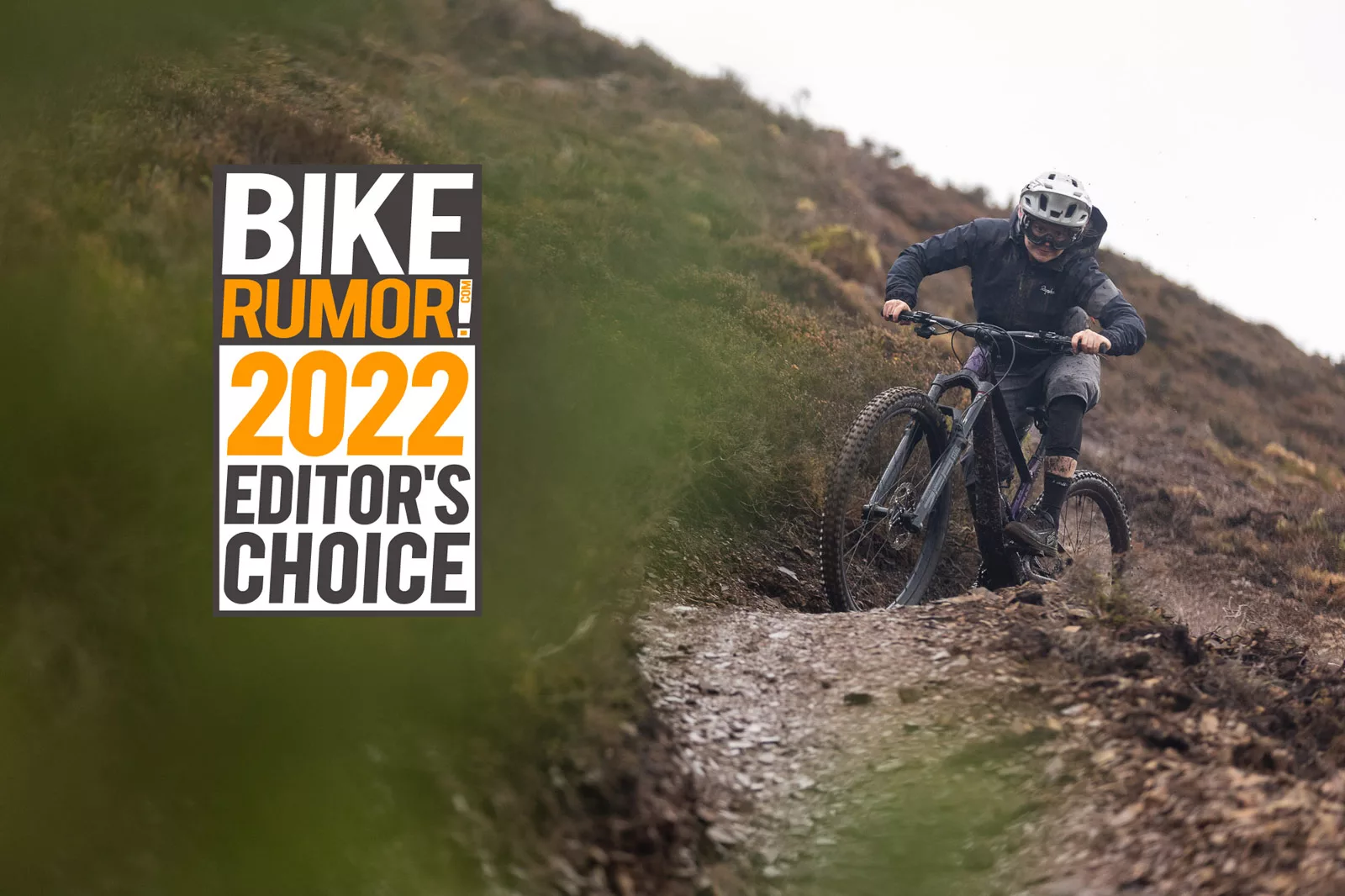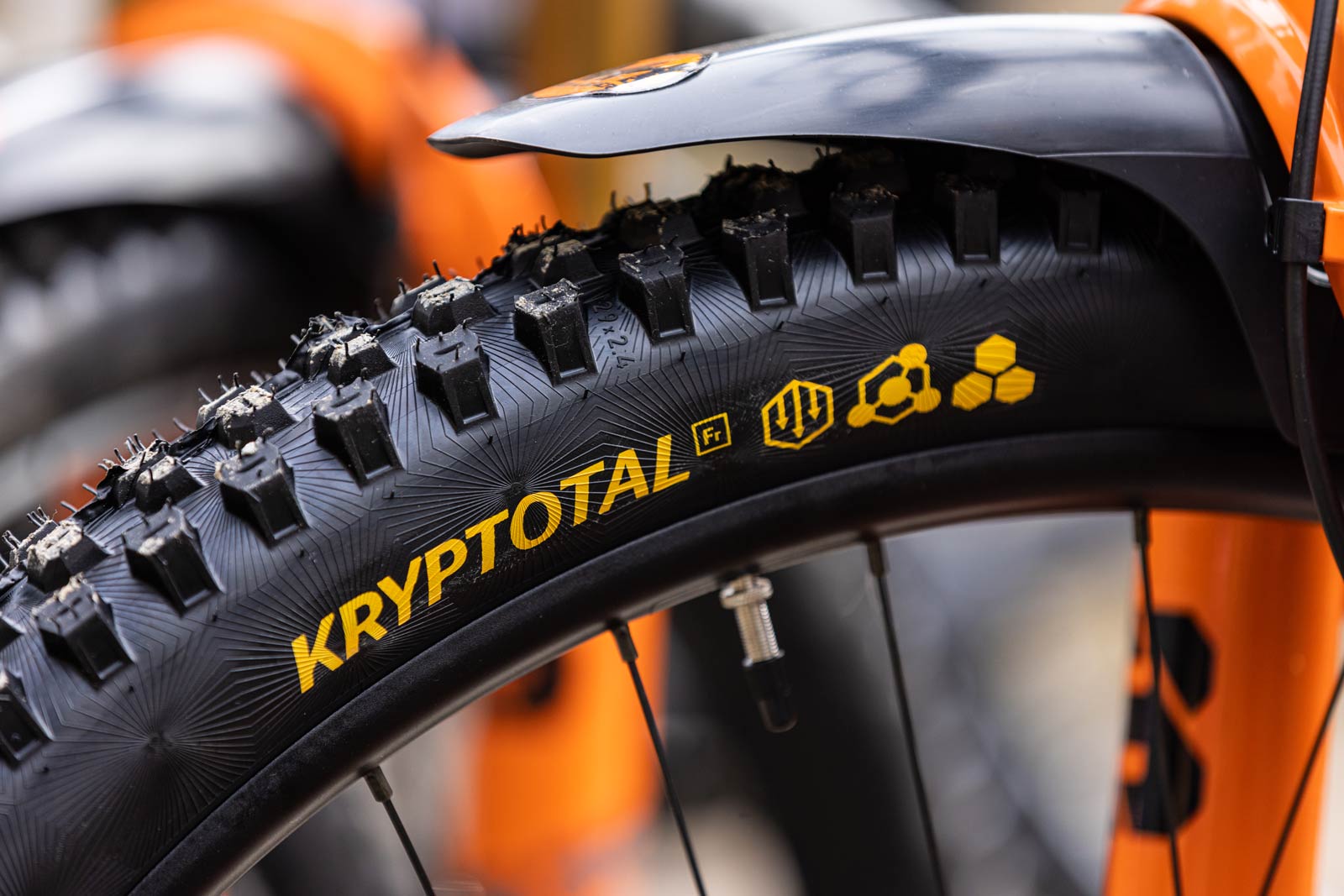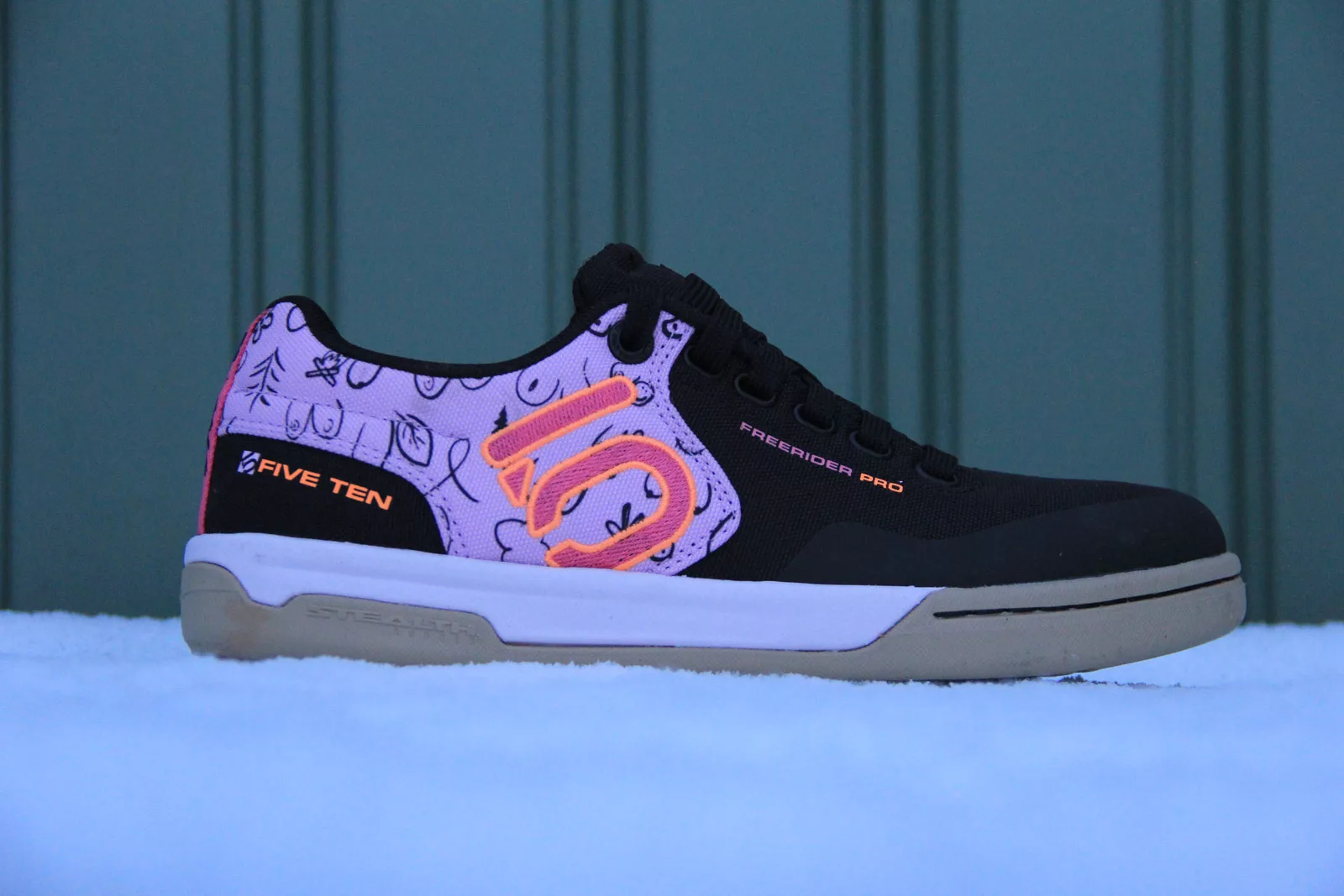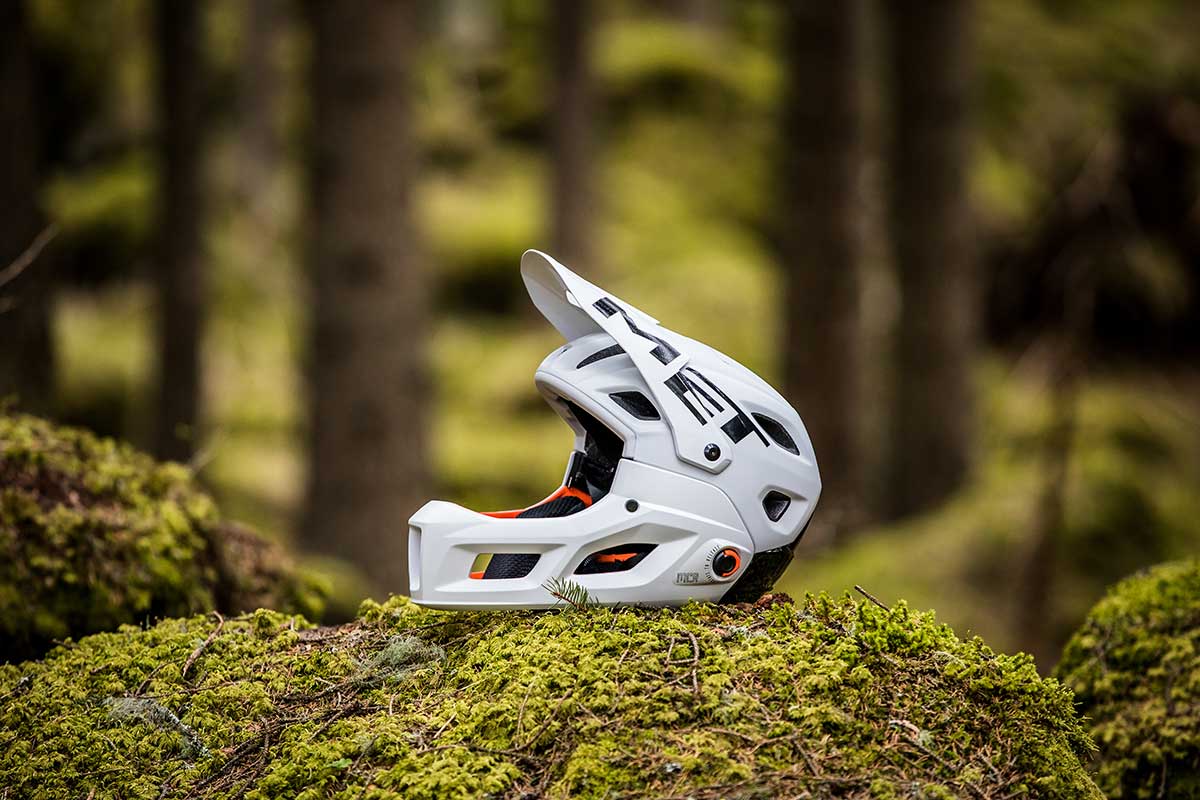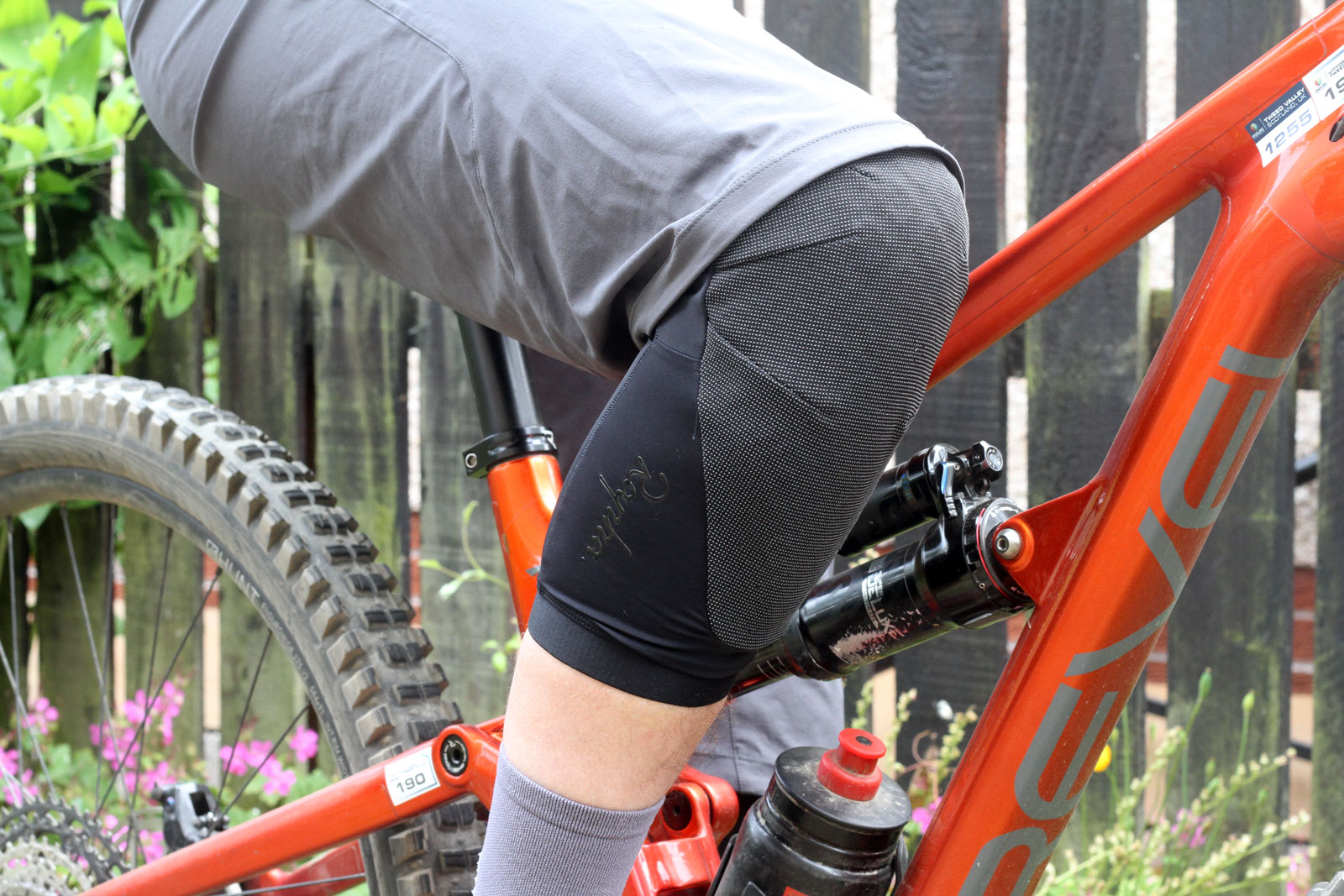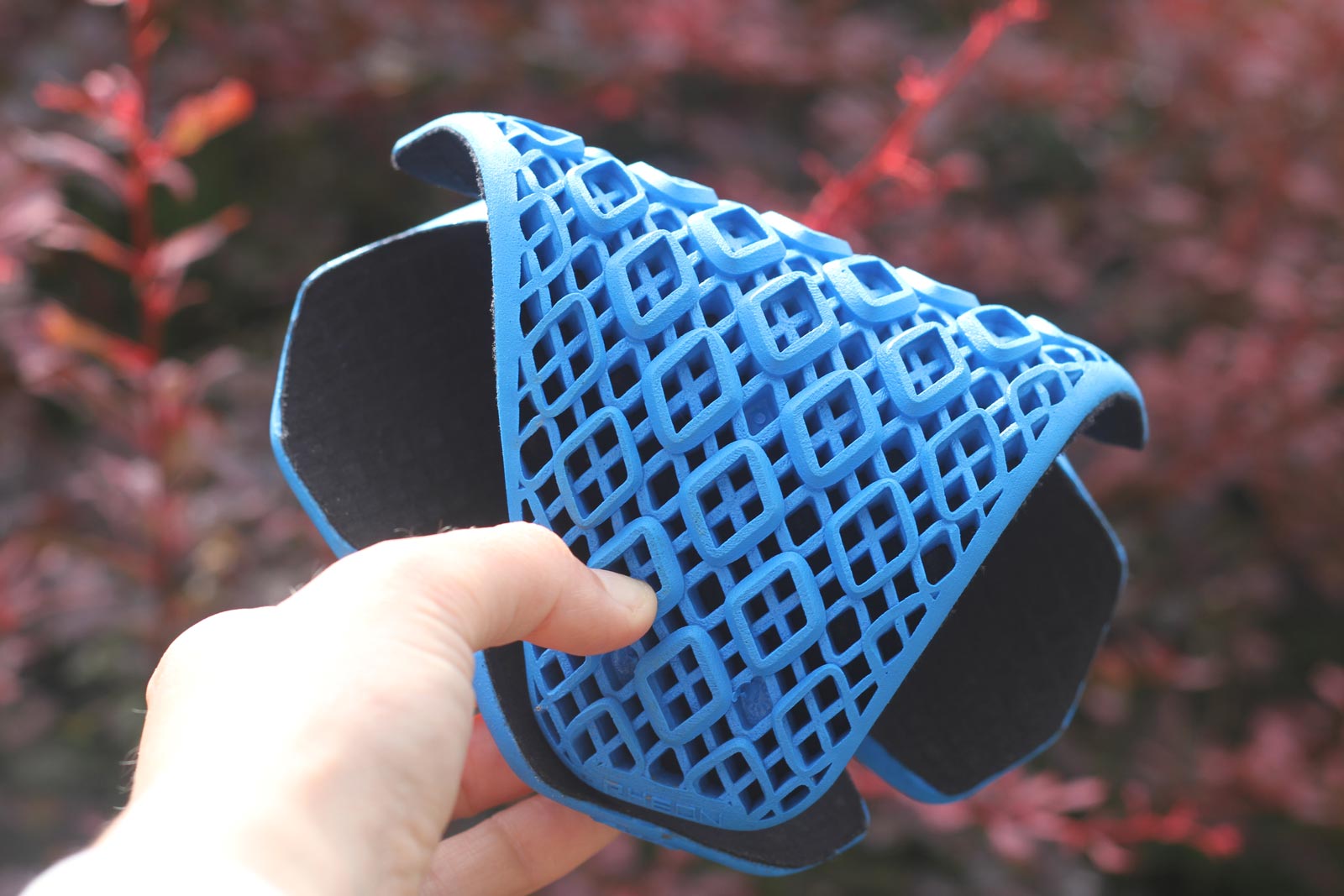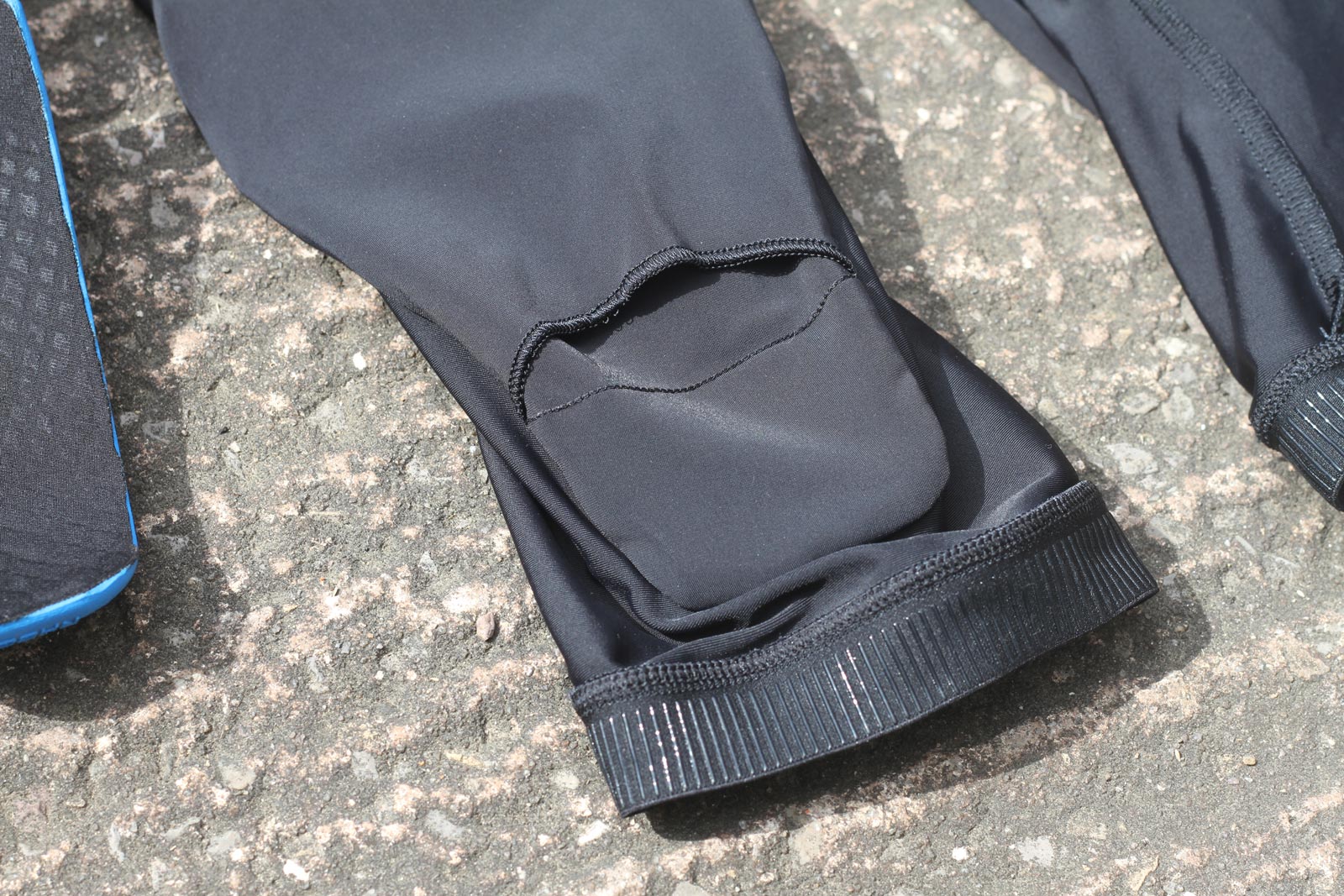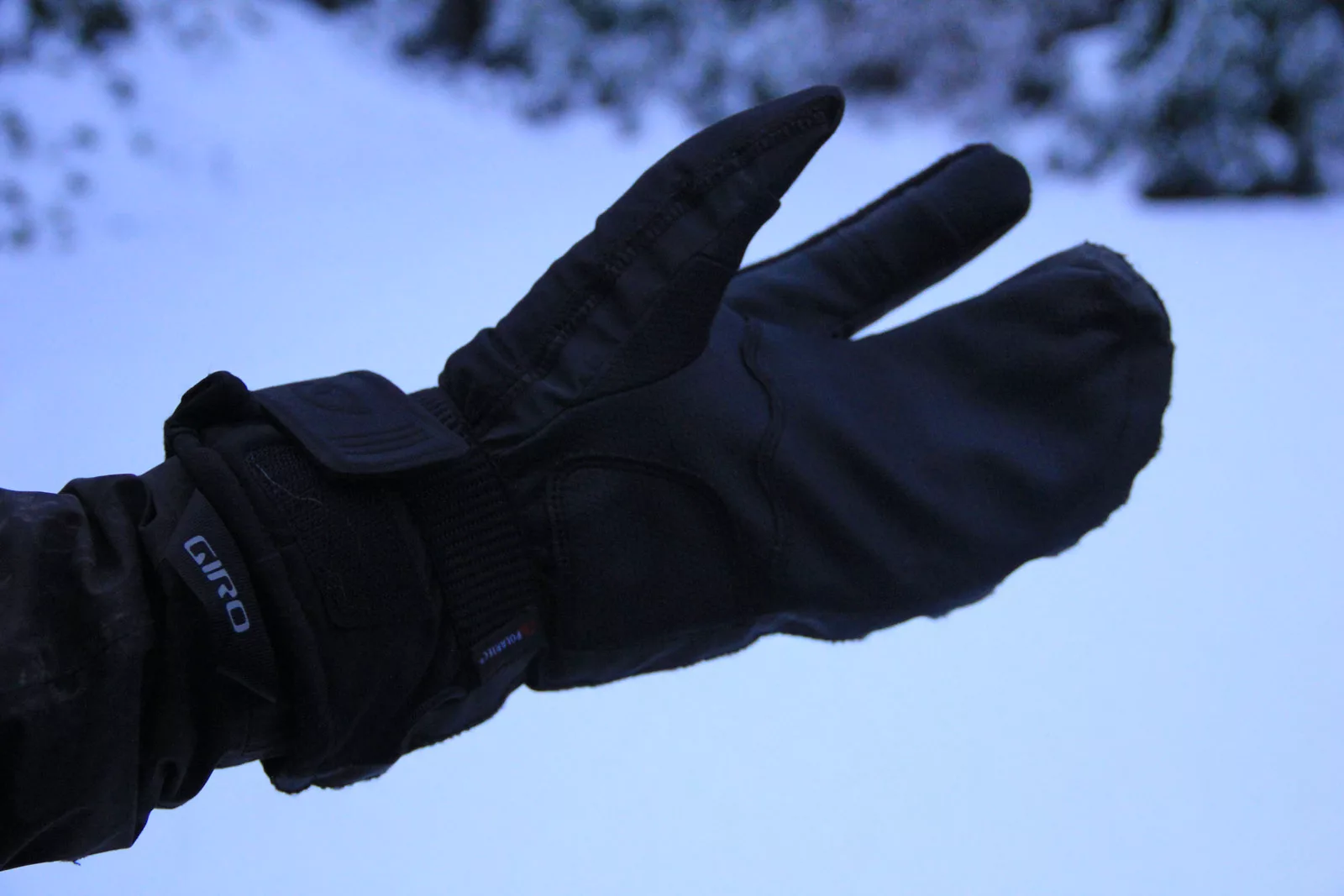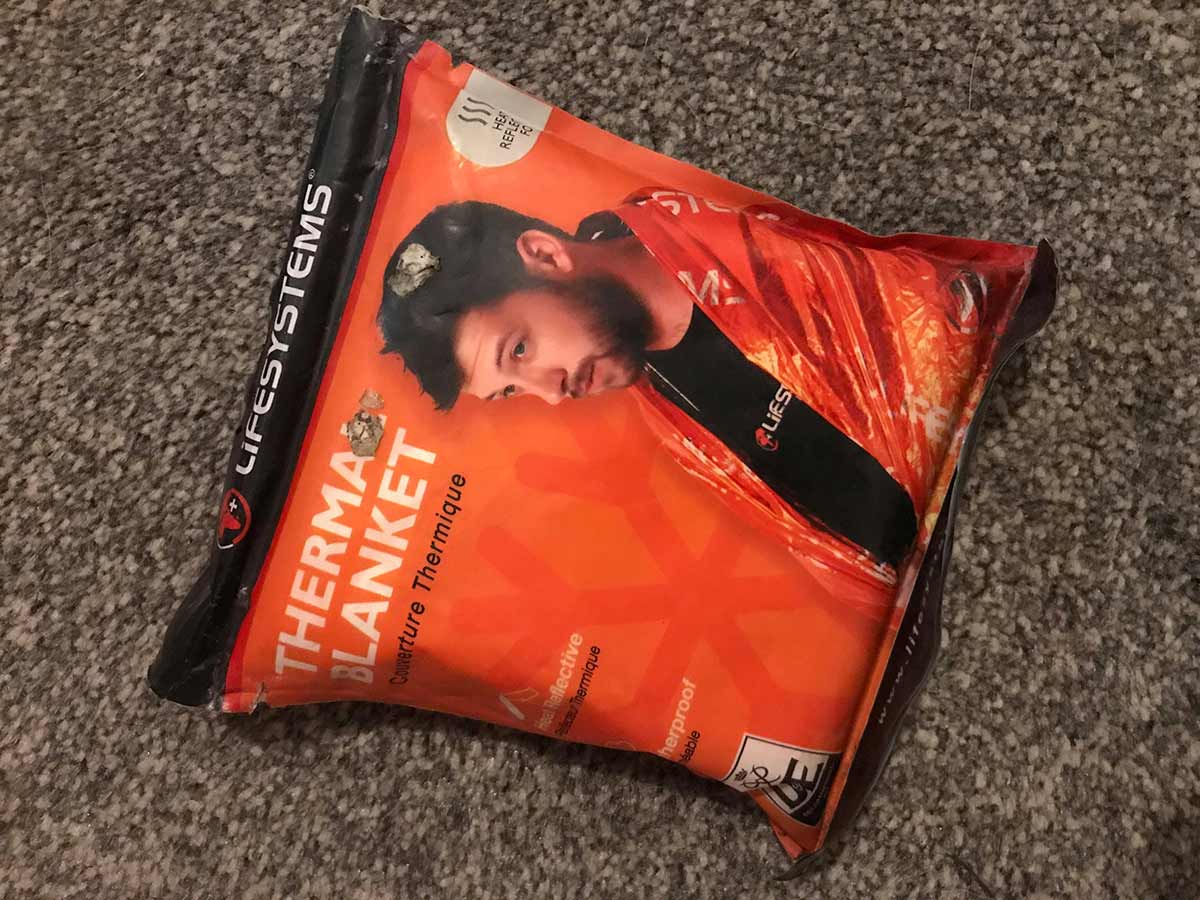It’s that time of year again! Time to lay on thick the compliments and general evidence-based hype for the mountain bikes, components and kit I thought was brilliant in 2022. While I don’t yet have a complete review published for a lot of the great items listed below, trust me on this; if I found it to have an unforgivable, fundamental flaw, it is not featured. Herein, you will find unadulterated praise only for those items I have personally found to be deserving of it.
About Jessie-May
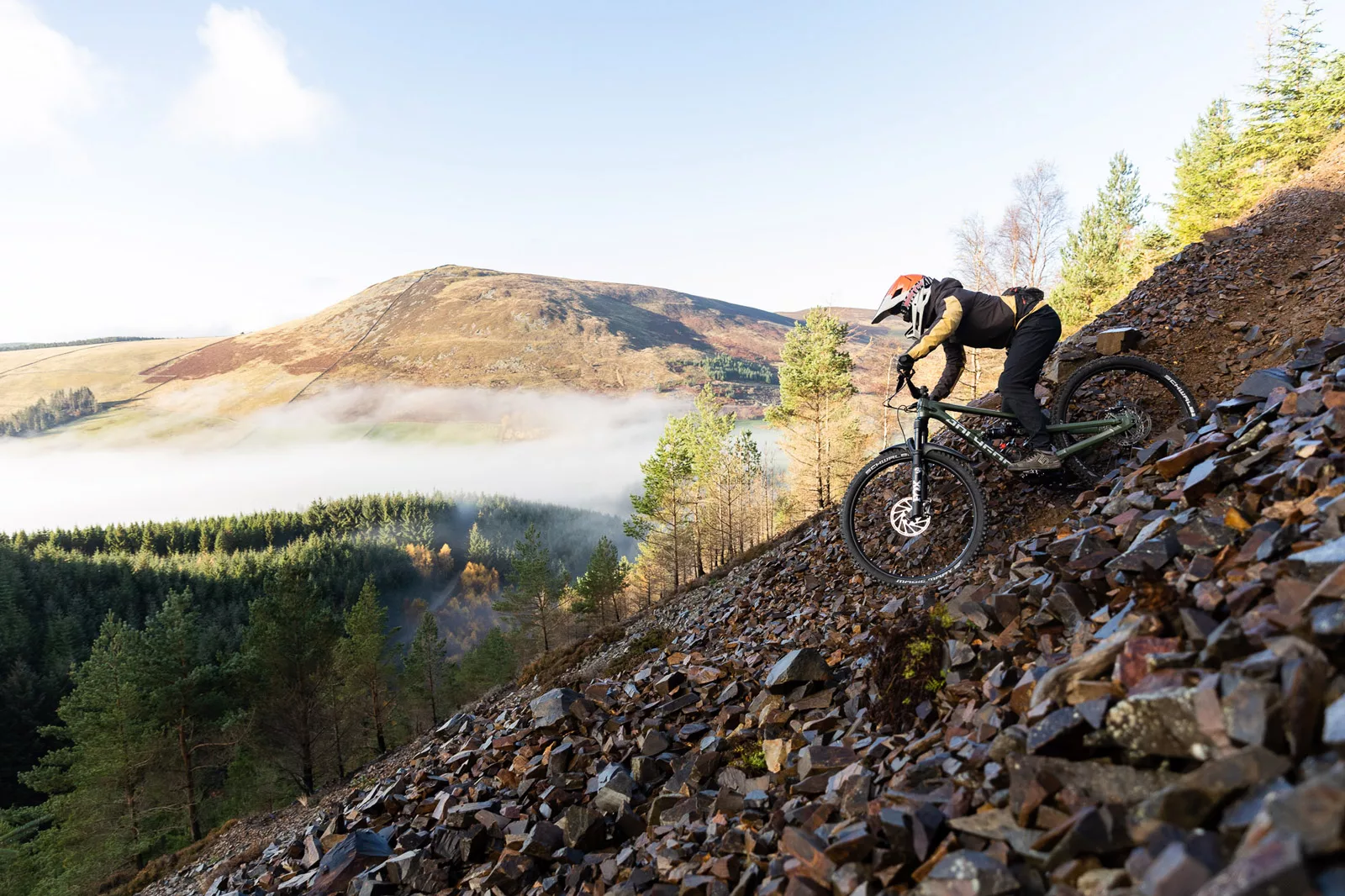
First, some context. I am primarily an enduro rider, but I guess I will ride anything off-road so long as it has a flat bar. I feel most at home on a skills compensator long-travel mountain bike, riding steep, technical trails that are maybe just a teeny weeny bit (but not too far) out of my comfort zone. Handy then that I live in the UK’s mecca for that sort of thing. Never mind me, let’s talk about where I ride.
In case you were in any doubt whatsoever, I can confirm with complete lack of bias that the Tweed Valley is all it’s cracked up to be, and you should definitely visit.
That’s thanks to a small but rapidly growing group of dedicated trail builders, many of whom are members of the Tweed Valley Trails Association, a charity I am a proud supporter of. Around 3,200 people live in the small town of Innerleithen, yet it is able to support no fewer than five independent bike shops. It’s also the HQ of the Enduro Sports Organisation (aka the EWS). It’s also home to the Borders Academy for Sporting Excellence’s Mountain Biking Course, and a new mountain bike journalist seems to move here every week. And, how, could I forget? The eyes of the mountain bike world will be locked onto this valley when Scotland hosts the UCI Cycling World Championships in August 2023.
Every time I leave this place to go riding elsewhere (perish the thought) I invariably meet a mountain biker or group thereof who report “wishing” that they lived here, or even that they are actively trying to buy a house here.
This little town in the Scottish Borders actually has a sense of industry.
It’s trails that did that. Trails and the hardy folk who took tools to the dirt, sculpting it into their very own work of art. I guess what i’m trying to say is, i’m grateful for it. Without the trails, I wouldn’t be able to do this job that I love.
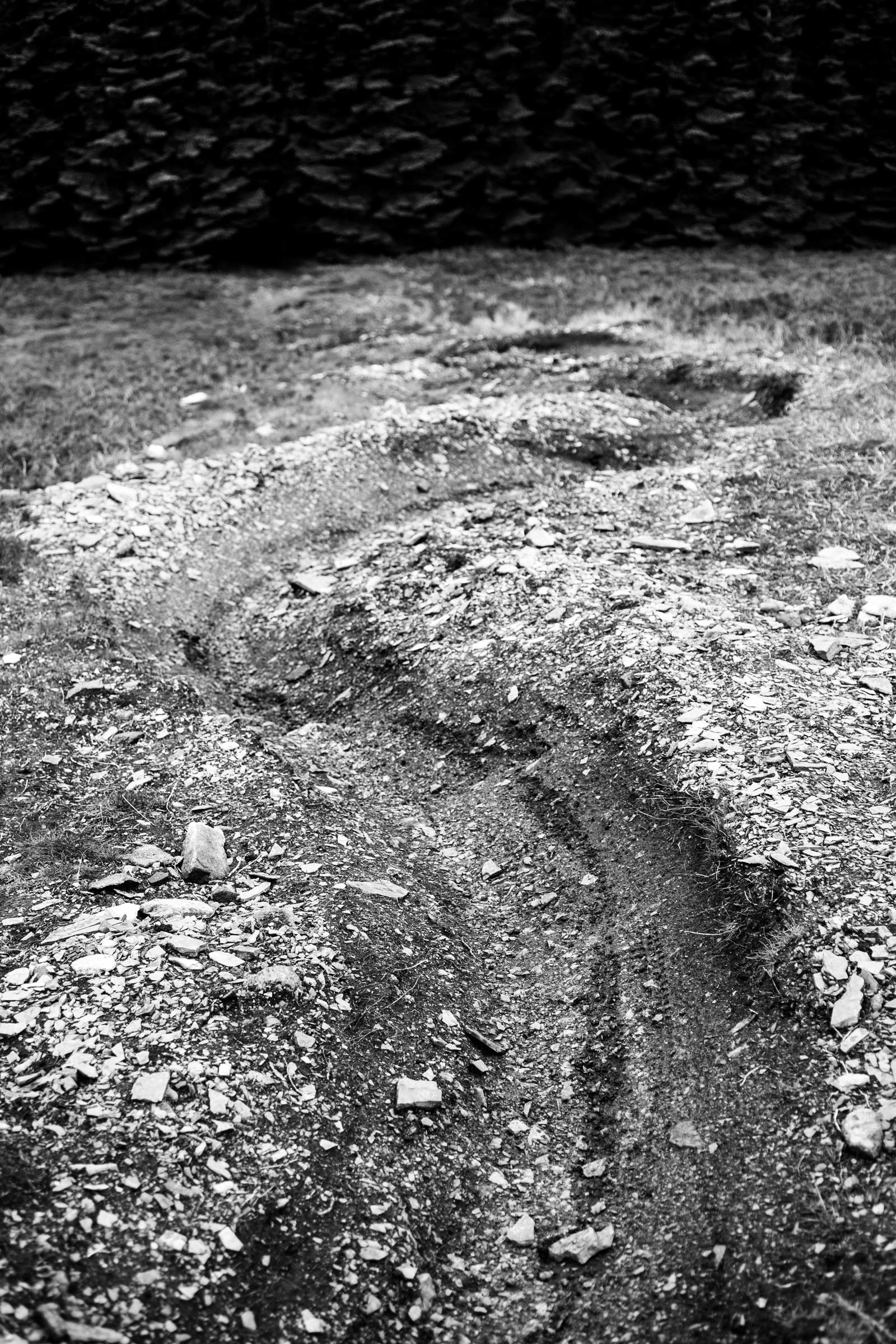
Anyway, here’s a bunch of stuff that has, in some shape or form, helped me enjoy some wild times on the aforementioned.
Enduro Mountain Bike
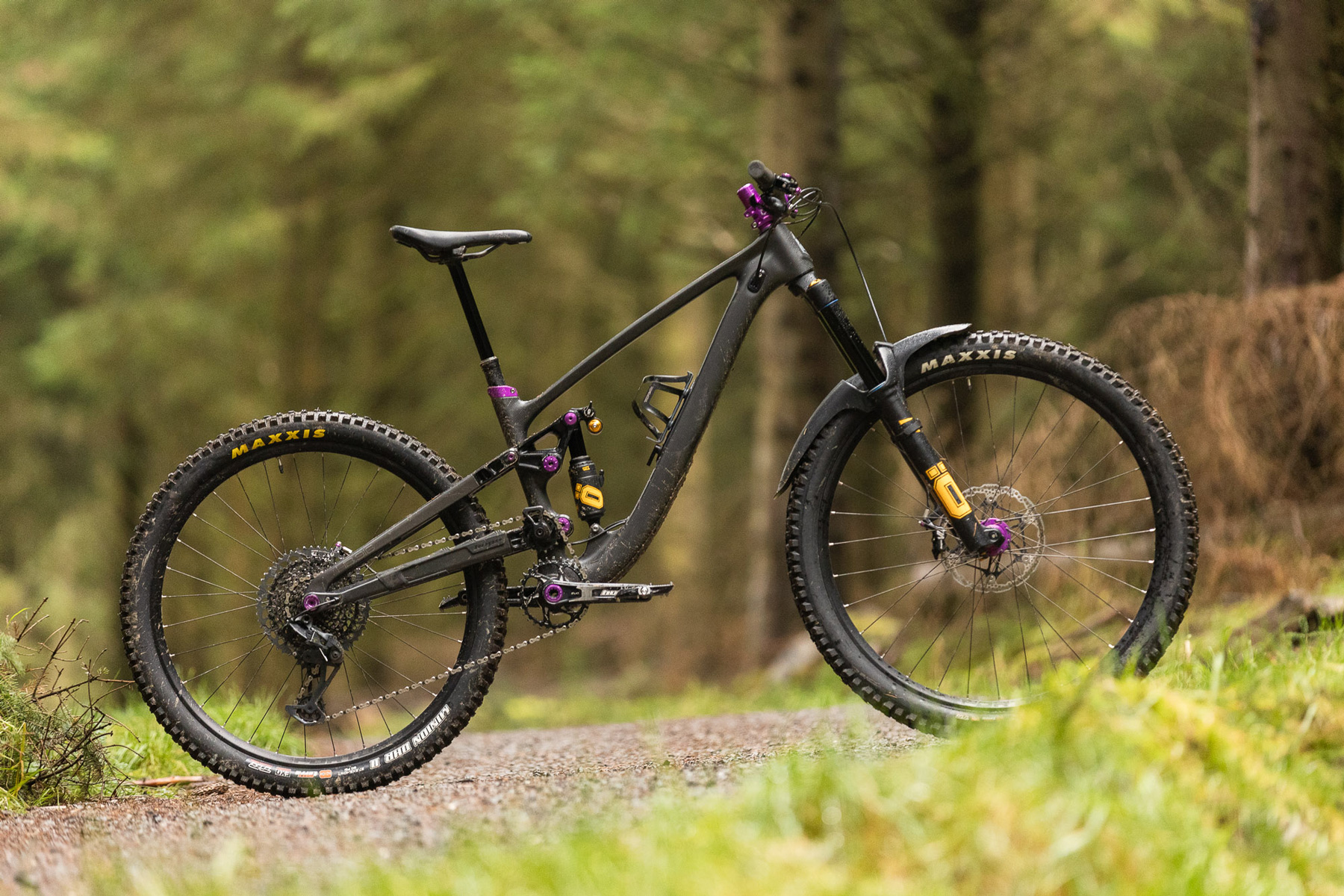
EDITOR’S CHOICE: Hope HB.916
The Hope HB916 is by definition my Editor’s Choice for 2022. When I accepted the offer to review this 160mm travel high(ish) pivot enduro mountain bike, I was blissfully unaware that it was to cost me several thousands of pounds. After 6 weeks of riding it on the local Tweed Valley trails and some choice singletrack around Aberdeenshire, I was well and truly sold. The bike felt like home. To leave you in the shadow of no doubt, the Hope HB.916 is the best enduro bike I’ve ridden to date.
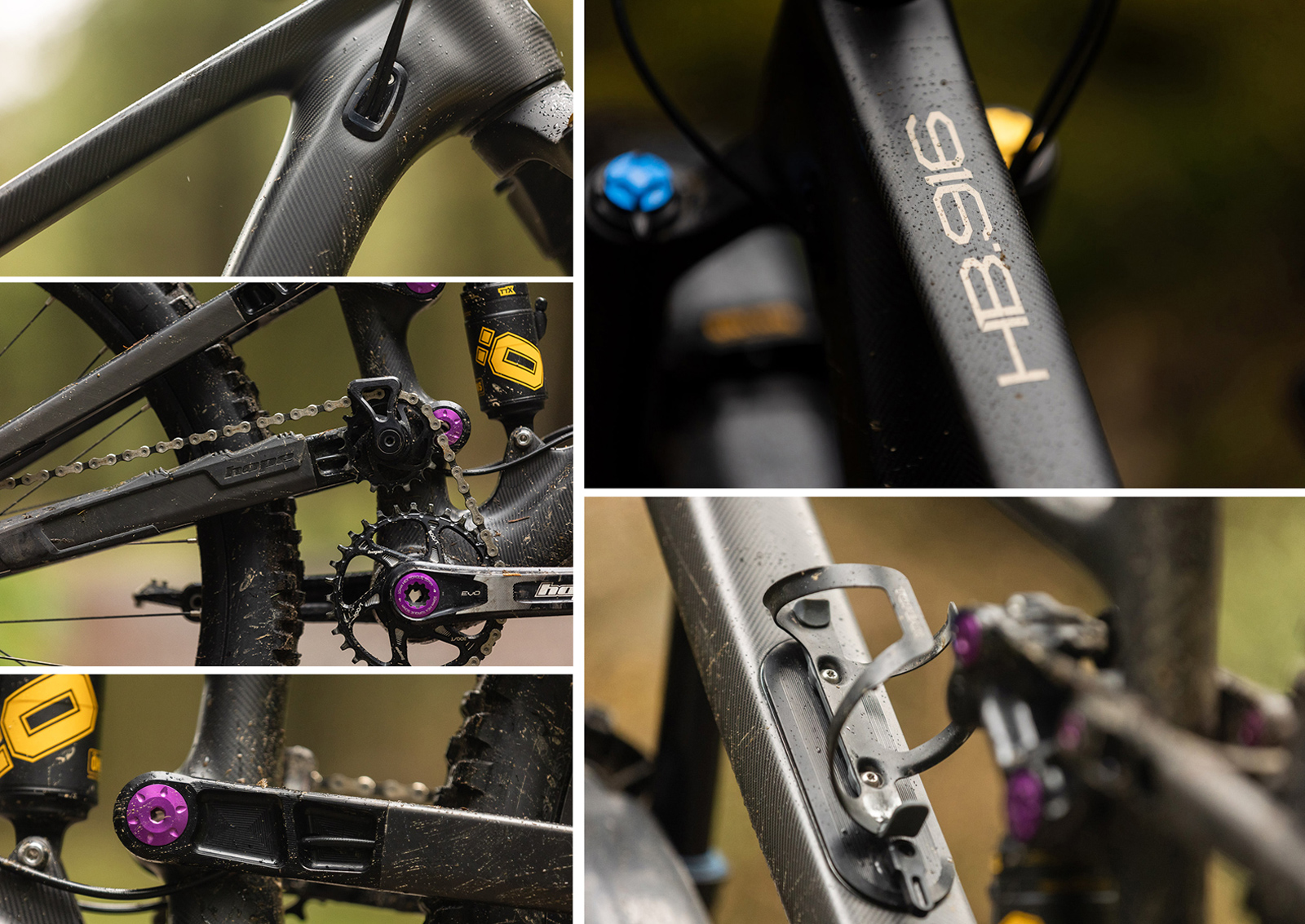
I set the H1 bike up in its 29″/27.5″ wheel size configuration, with the head angle in the slack setting. A 63.2° head angle, 78.2° effective seat tube angle, 440mm chainstays, with a rear-center length that grows 13mm, a low BB…. You can get the geometry chart and read the complete review here but, briefly… you should know the HB916 is 1.) easy to ride fast, 2.) supremely well-balanced, 3.) pure enduro flattery.
And, it’s quiet. It has a butty-box. It’s light. It runs a UDH. It can take ultra long droppers. It’s made entirely in the UK. And, it’s actually quite reasonably priced! I’ll stop now. Read the review.
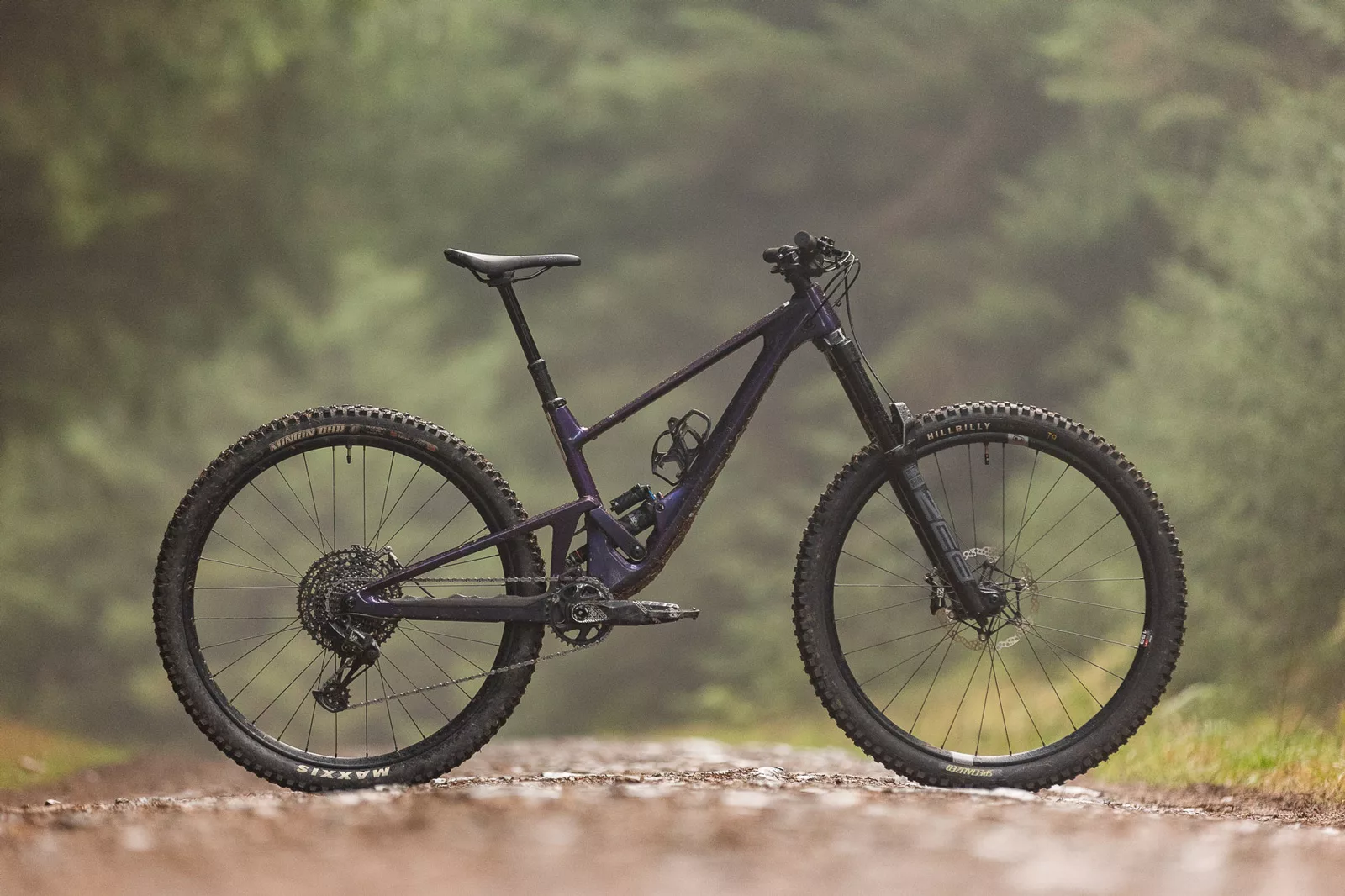
EDITOR’S CHOICE: SCOR 4060 LT
This one was massively fun. It’s not what i’d choose to race, but the SCOR 4050 LT is an incredibly playful long-travel enduro bike. Its twin-link suspension platform allows it to track through chunk smoothly with plenty of pop for transfer lines, and with a nimbleness i’ve not previously experienced on a complete 29er of this travel bracket.
The bike offers up a neutral pedaling platform that oozes efficiency on long fire road climbs. I found it to be a quiet and thoroughly capable descender. It delivers its 160mm of rear wheel travel in a relatively lightweight package; I weighed the small at 15.3 kg. The bike makes light work of the tight and technical, and just begs for more on faster flow trails.
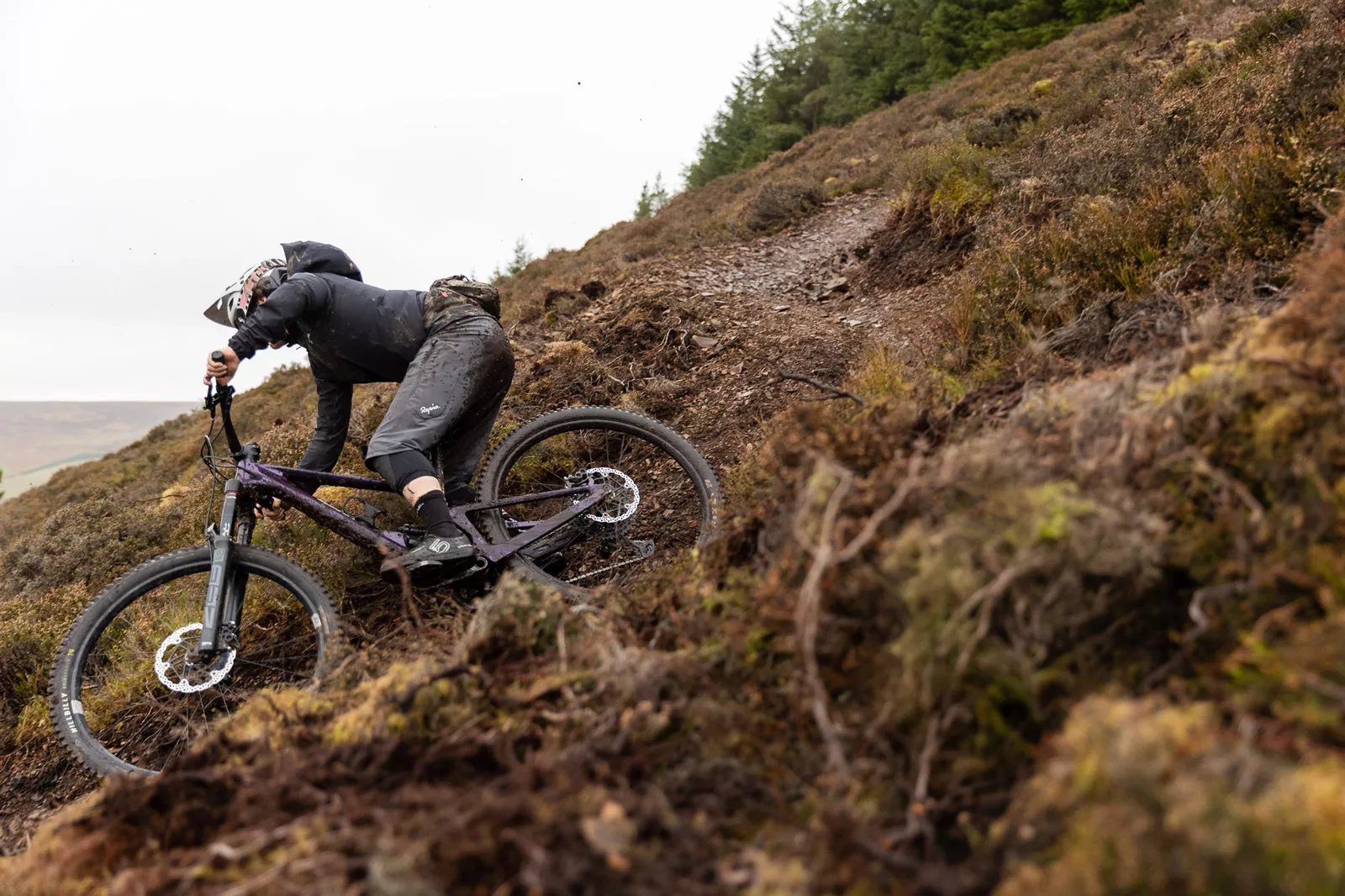
This one too has some frame storage and a UDH. And, it is meaningfully adjustable. That’s right, it offers way more than a simple flip-chip that lowers your BB by 3mm (snooze). The SCOR 4060 can also be set up as an ST version of itself with the correct suspension components, and it has an angle adjust headset, and you can run it as a mullet if you so wish. Read my complete review of the SCOR 4060 LT here.
XC Bike
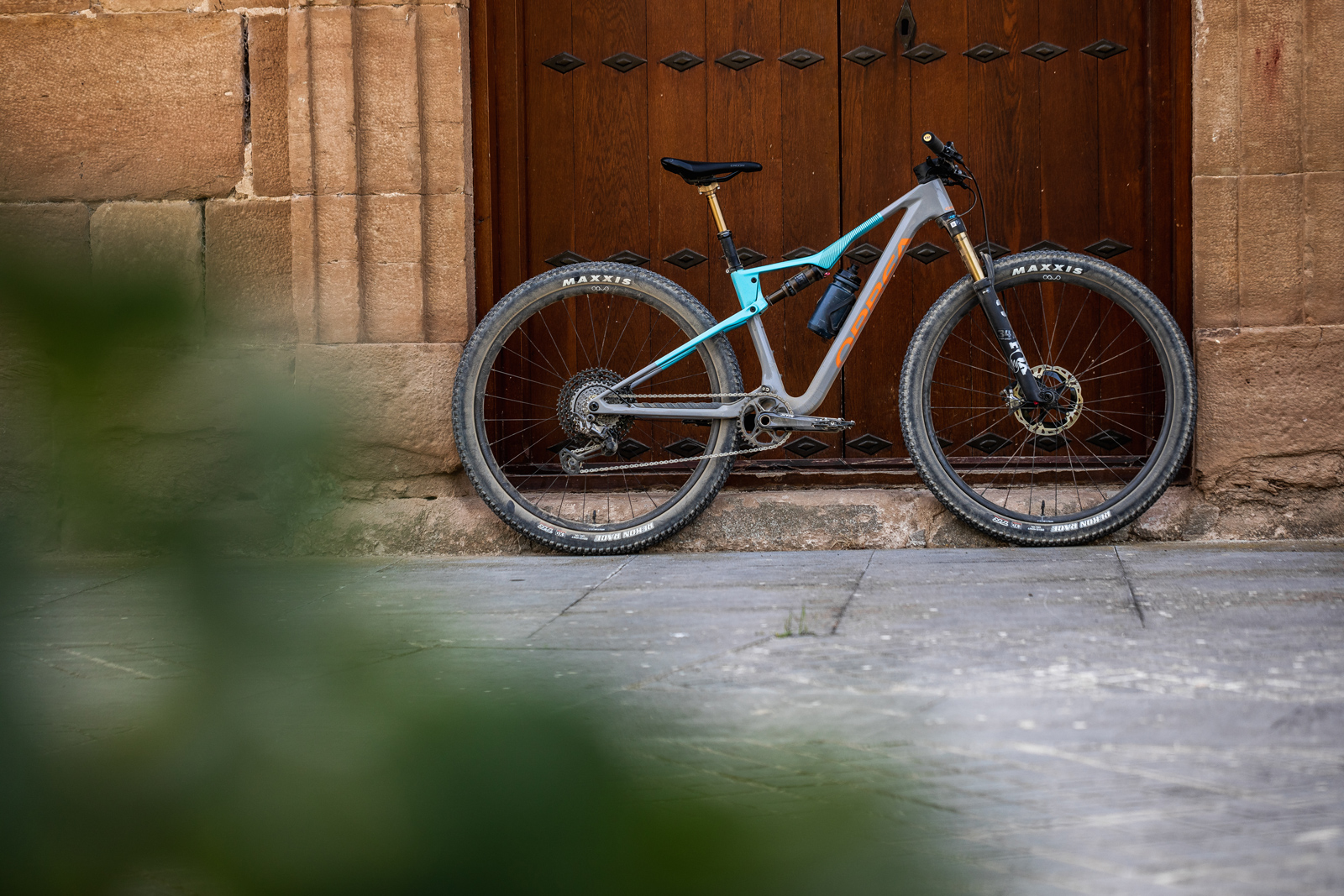
EDITOR’S CHOICE: 2023 Orbea Oiz
Here’s a bike I wasn’t expecting to make it into the list; the 2023 Orbea Oiz. An XC bike! Indeed, readers will know me well enough by now to know that I tend to stick to skills-compensating longer travel mountain bikes (see above), rarely wandering into the realms of fast-rolling tires, ultra low stacks and push-to-unlock suspension. Thus, you may take my opinion with a pinch of salt of you wish. I don’t have a wealth of experience riding 120mm XC mountain Bikes, but i’m not going to let that stop me telling everyone how great I think the 2023 Orbea Oiz is.
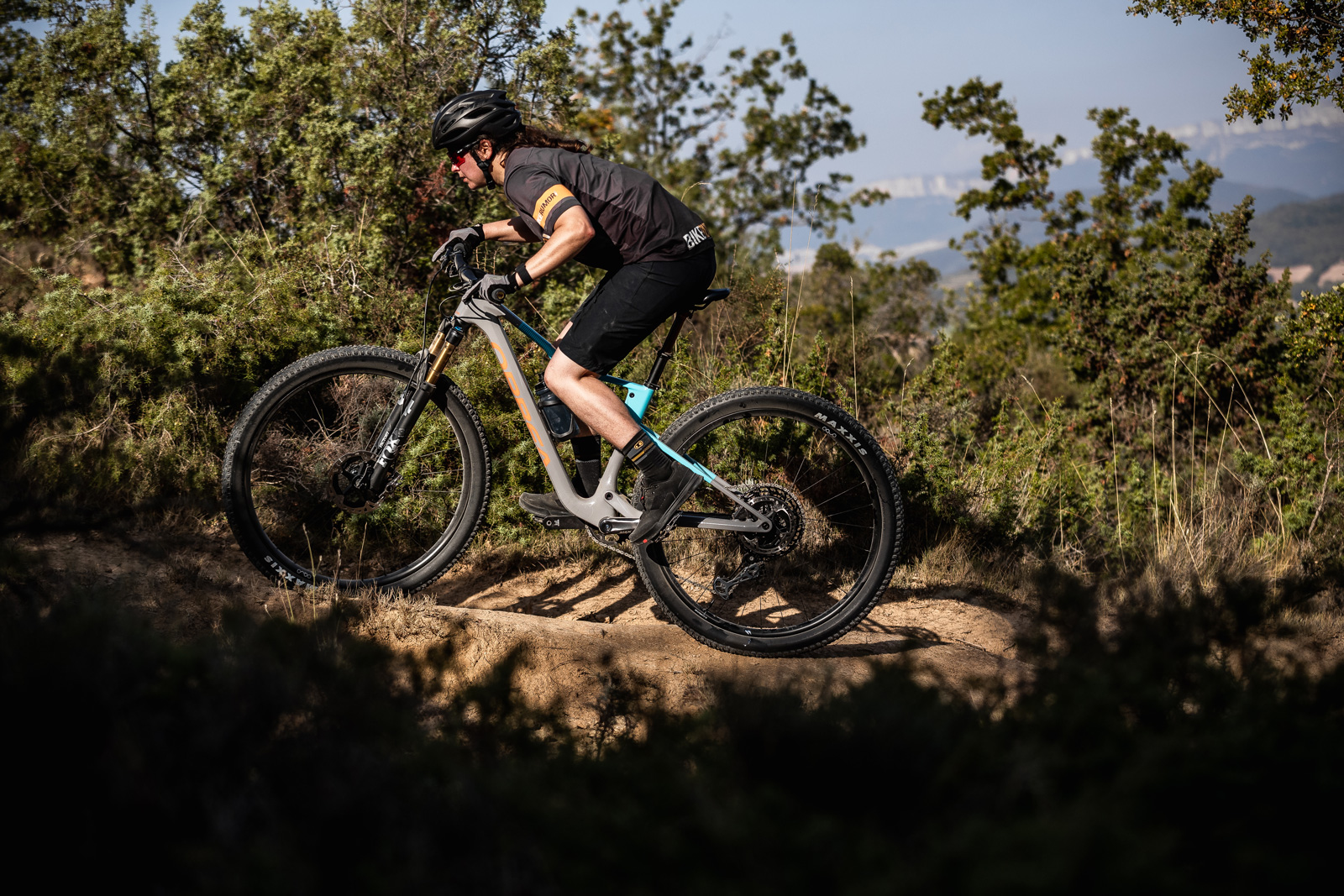
Perhaps it was the refreshing feeling of effortless forward propulsion, the unmatchable maneuverability of a 10.4 kg bike with 432mm chainstays, the careful management of the rear end’s 120mm by a custom tuned shock, or simply a great combination of geometry figures for my 5ft 4″ frame; whatever it was, this bike seemed to add up to more than the sum of its parts. It was a pure joy to ride. Even though the pace of the climbing was far, far north of the staple enduro winch, the bike made me want to push on.
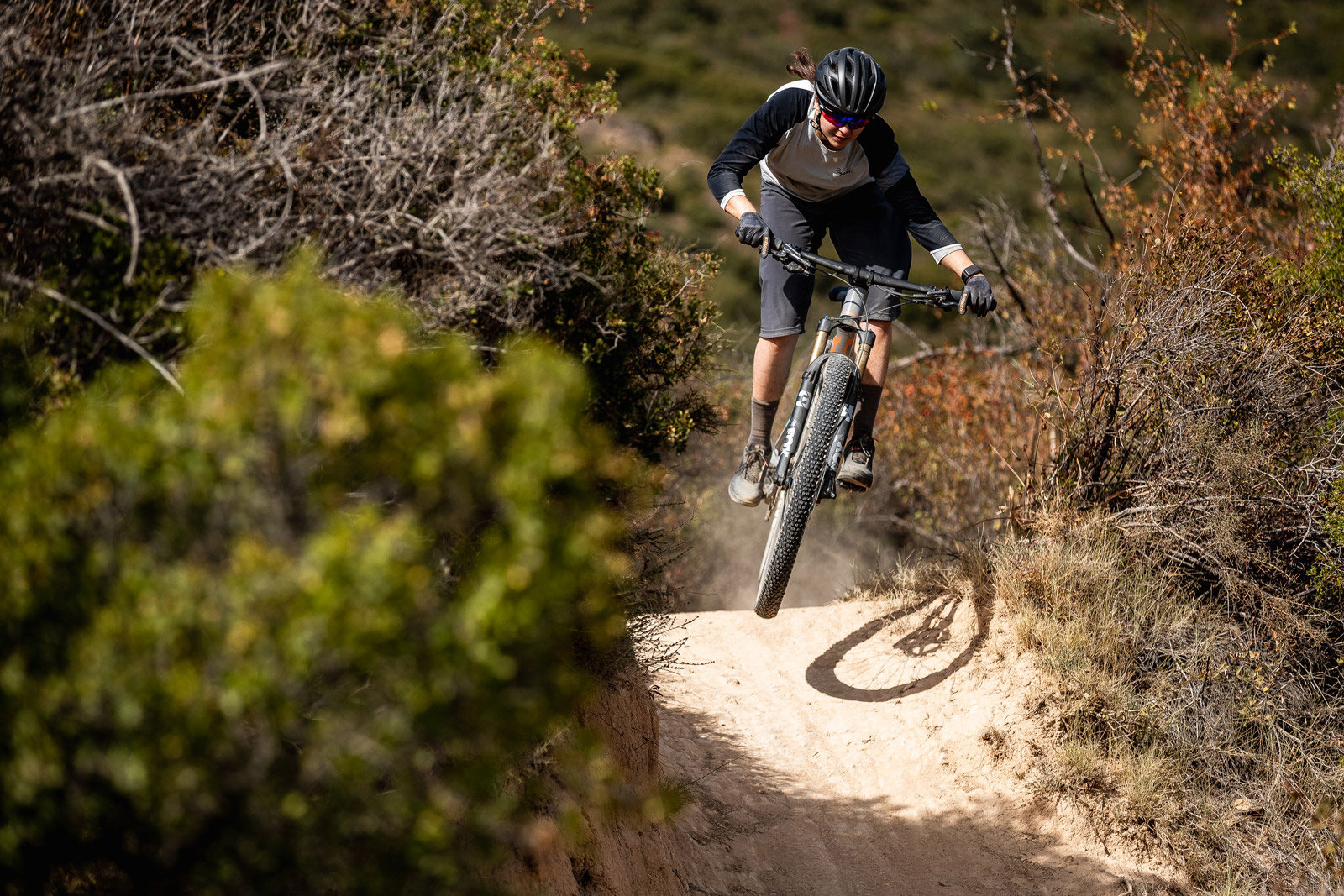
And on the descents? For me, the speed limiter wasn’t the bike’s 120mm travel, or the 67° head angle… no, it was the 2-piston brakes not quite permitting the late braking I have grown accustomed to. Regardless, in the heat of the moment, I found myself picking up over blind crests as though I was riding something far bigger in the travel department. The bike just made me feel it was all possible, and well… it was! Read more about the 2023 Orbea Oiz here.
Hardtail
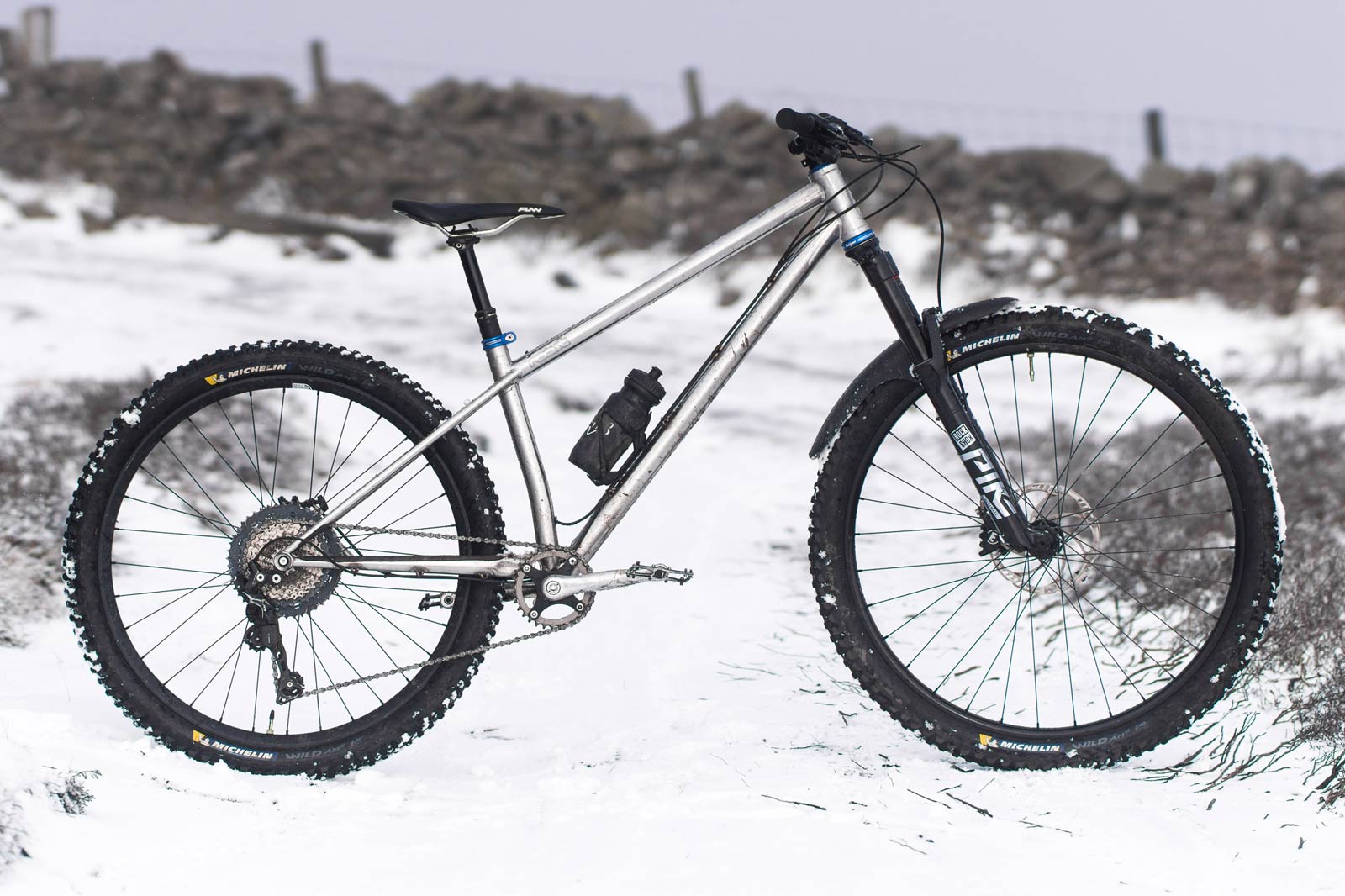
EDITOR’S CHOICE: Starling Roost
The Singletrack Stoke Machine. That’s how I titled my review of the Starling Roost after having the pleasure of riding it through the wintry months of 2022. Hardtails are always the ultimate mountain biking experience, of course; nothing is ever quite so thrilling as battering on down a rough, root-littered trail with only the cartilage in your knees and the rubber on the soles of your shoes to take the edge off. Hardtails are an all-encompassing experience that have the capacity to make even the most under-maintained sections of a 20+ year-old trail center delivers of unbridled joy.
Like a lot of riders, my love for mountain biking was born on the humble hardtail. I don’t get to ride many these days, so I guess I’ve little to compare this steel framed 140mm mixed-wheel hardtail against. In that sense, I guess my Editor’s Choice is more gentle encouragement to grab yourself a decent hardtail, head out into the woods and remind yourself why you fell in love with the sport in the first place.
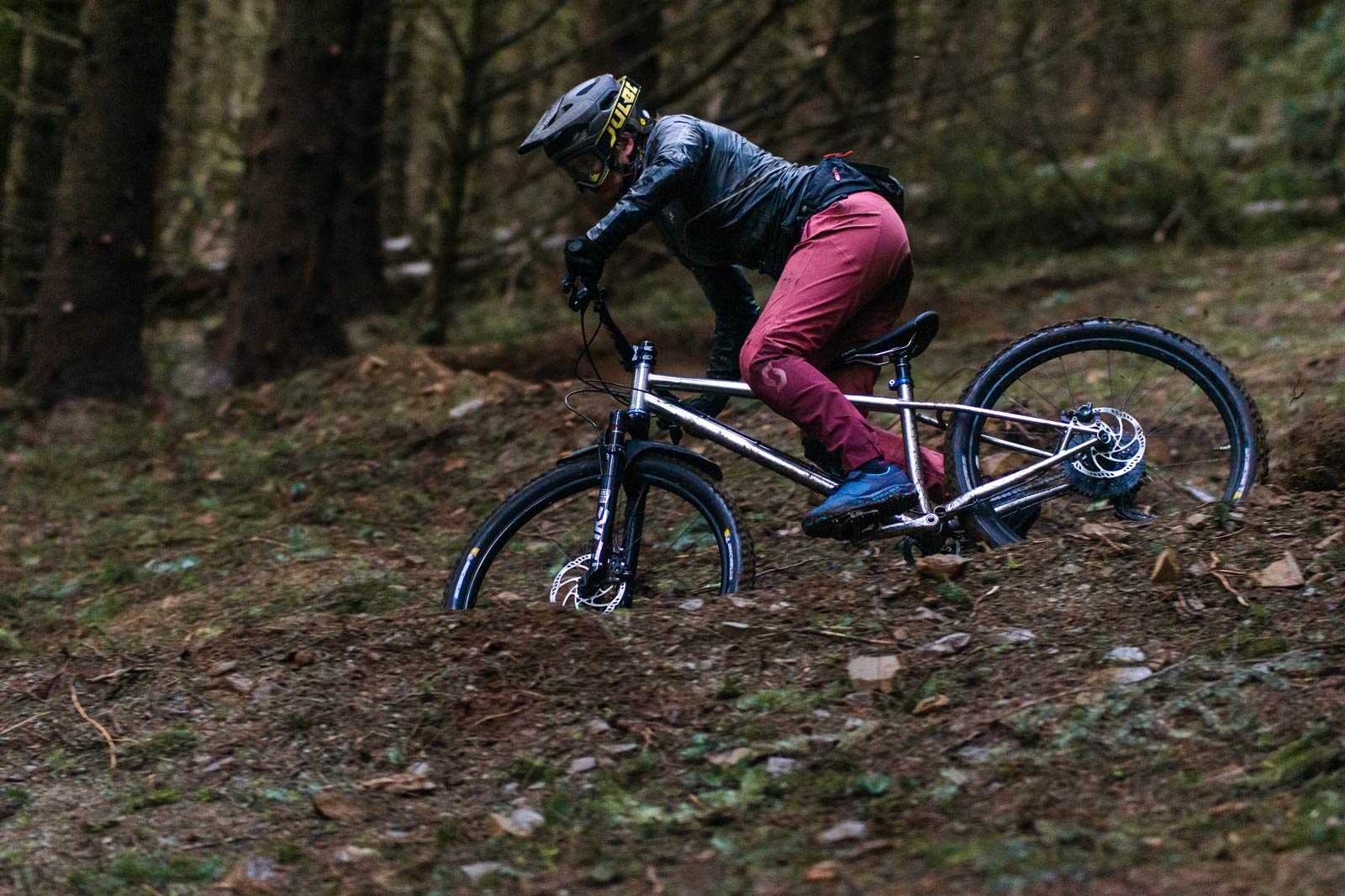
That said, I found very little to complain about during my time aboard the Starling Roost. It rails corners and tackles the gnar with far more finesse than it (or I) ought to. This one put a huge smile on my face. A 64° head angle, 425mm rear-center and CushCore Pro in the front and rear may have had something to do with it! Check out my review here.
Enduro MTB Tires
EDITOR’S CHOICE: Continental Kryptotal Front
Earlier this year, Continental completely revamped its line up of Gravity Mountain Bike Tires, introducing 5 new tread patterns, three new casing constructions and three new rubber compounds. Of the 40 new tires, I’ve tried just three of them; the Kryptotal Front and Rear in the DH Casing and Super Soft Compound, and the Kryptotal Front in the Enduro Casing with the Soft Compound.
The former were definitely a little overkill for this 60kg rider. A DH Casing is overkill for me anyway, let alone when put to use on Dyfi Bike Park’s flow trails on the Atherton.130.X trail bike. While my first impressions of the tread pattern certainly weren’t bad, it was only when I got to test the Kryptotal Front Enduro tire at home on my local trails and on my own enduro bike that I realized what a quality tire this is.
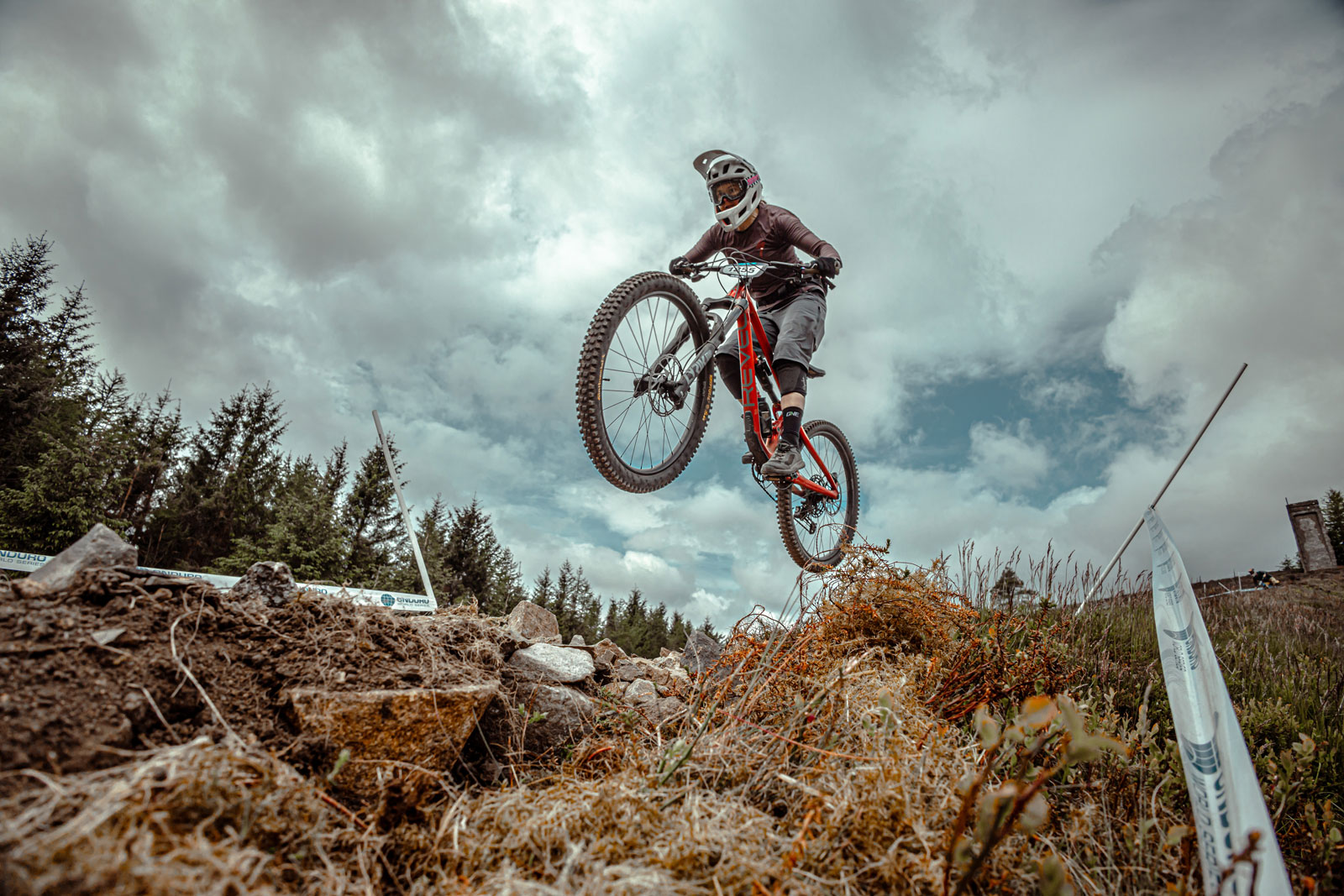
I think the Continental Kryptotal is a worthy competitor of the Maxxis Assegai; it’s that good. It may come as little surprise, though, given the similarities in the tread pattern. For me, the Kryptotal has been a predictable tire across a multitude of conditions from those intermediate, greasy conditions, through to dry as bone, dusty trails littered with marble-like rubble. The 110 TPI casing is both supple and well-damped. Great job, Continental. Now, where’s the Super Soft Enduro version?
Dropper Seat Post
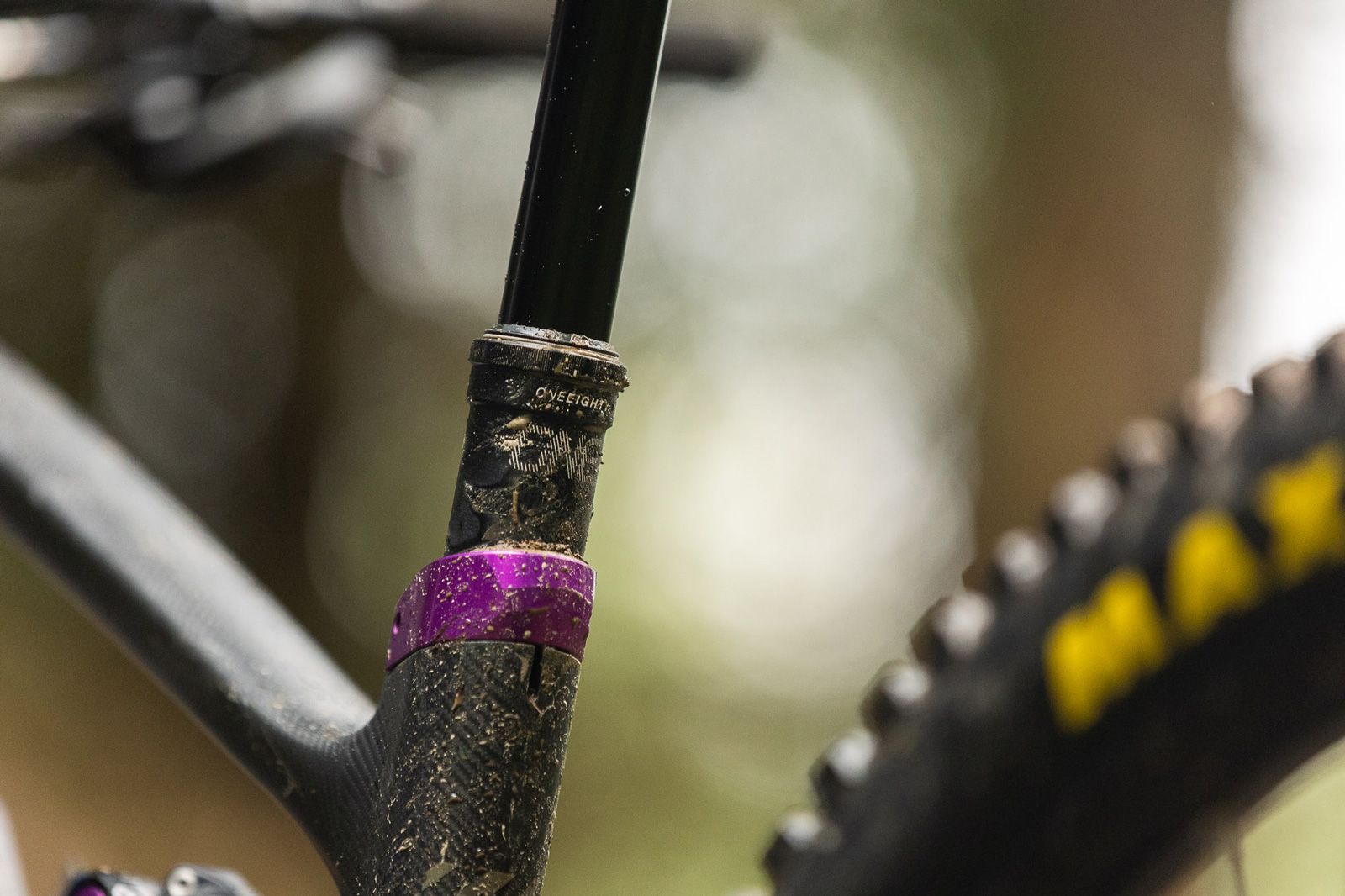
EDITOR’S CHOICE: OneUp Components V2
OneUp Components’ cable-actuated V2 dropper seat post has tangibly improved the ride-ability of two of my test bikes this year; the SCOR 4060 LT mentioned above, and the 2022 Vitus Sommet 297. Why? Because its shorter overall length has allowed me to upgrade from the 125mm dropper that came stock on both of them to a 150mm drop OneUp. Boom! An extra 25mm clearance for dancing around the cockpit. That’s a win in my opinion. I was even able to benefit from a 180mm drop on the Hope HB916. What a treat that was.
While the OneUp V2 isn’t infinitely adjustable, its drop length can be shimmed down in 10mm increments to suit your preferred saddle height. Return speed can also be adjusted by how much air you pressurize the cartridge with. It is easy to install, and it is completely rebuildable. The new V3 Remote is great, too; it has a super light action, and you can customize the color of the thumb pad to match your bike.
Clipless Pedals
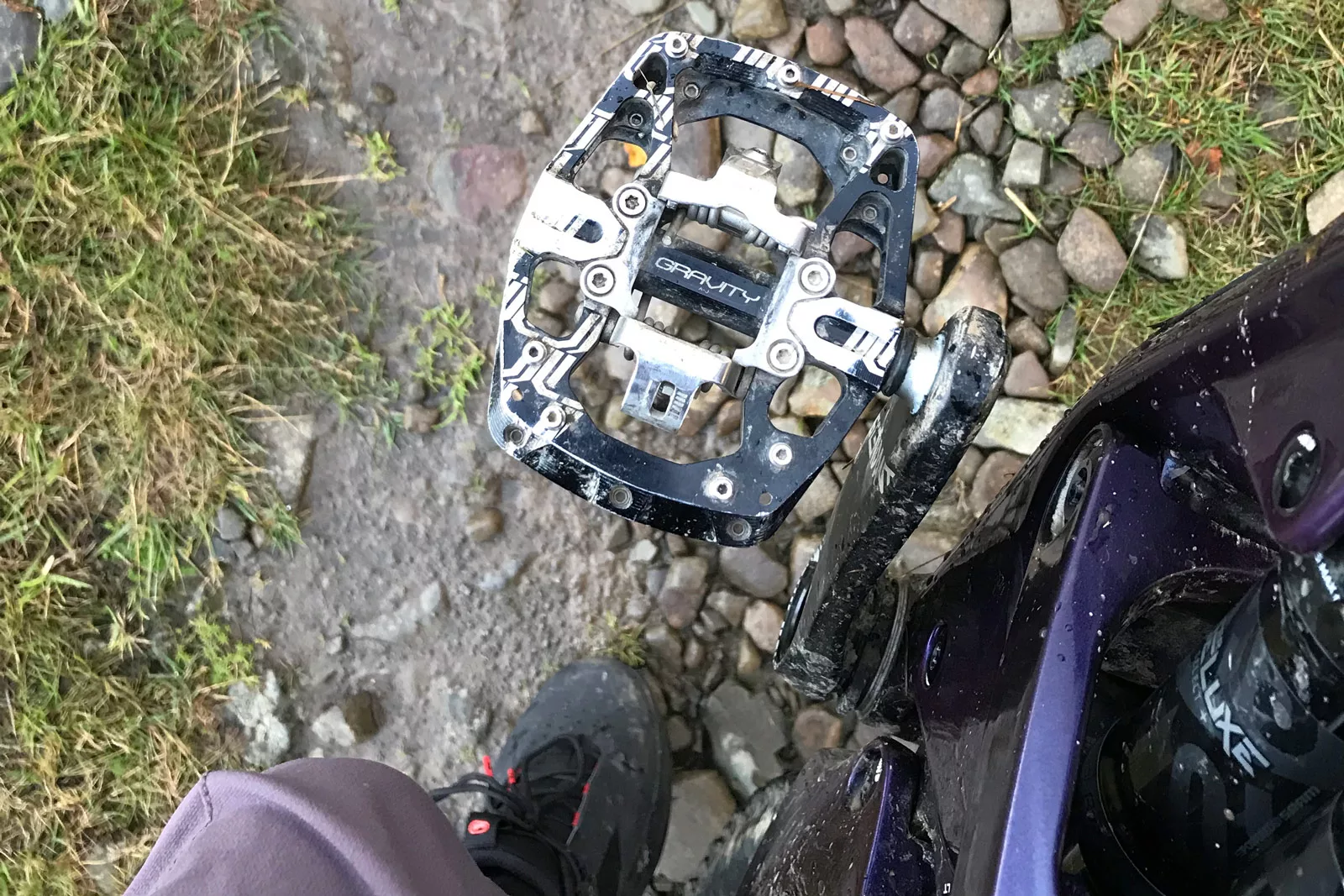
EDITOR’S CHOICE: Hope Union Gravity Clipless Pedals
Here’s another product I hadn’t envisaged making it into this list. Up until this year I have, almost exclusively, ridden flat pedals (save for the rare occasion I head out onto the tarmac aboard my grandfather’s old Brujef road racing bike). I became the rider I am today by riding and racing mountain bikes on flats; rarely have I been tempted to dabble with a clipless option. The times I have given them a shot, it’s been a one ride affair wherein I felt like Bambi on ice; super vulnerable and like my feet were no longer my own.
That changed this year when a friend encouraged me to try the Hope Union Gravity Pedals. I was apprehensive, but also keen to find out if I could get on with them, and to see what i’ve been missing out on all these years. Safe to say, i’m glad I did. The mechanism is so easy to work with. It was simply intuitive, much easier to clip into and out of than others I’ve tried such as the Crankbrothers Mallet E Pedals, or Shimano SPDs.
If I had to unclip on the trail, mainly because I was nervous as I went through the process of getting used to them, I found I was able to clip back in immediately without really thinking about it. And, you can tune the release aspect to suit your preference. I used the Tech 4 Cleats with 4° of free float and a 12° release angle.
I guess what i’m saying is, if you too are a flat pedal rider but identify as clipless-curious, the Hope Union Gravity Pedals are a great place to start! I wouldn’t say I’m a convert by any means. I still can’t shake the idea that I may not be able to dab in the heat of the moment, but I do look forward to cracking them out again next summer.
MTB Shoes
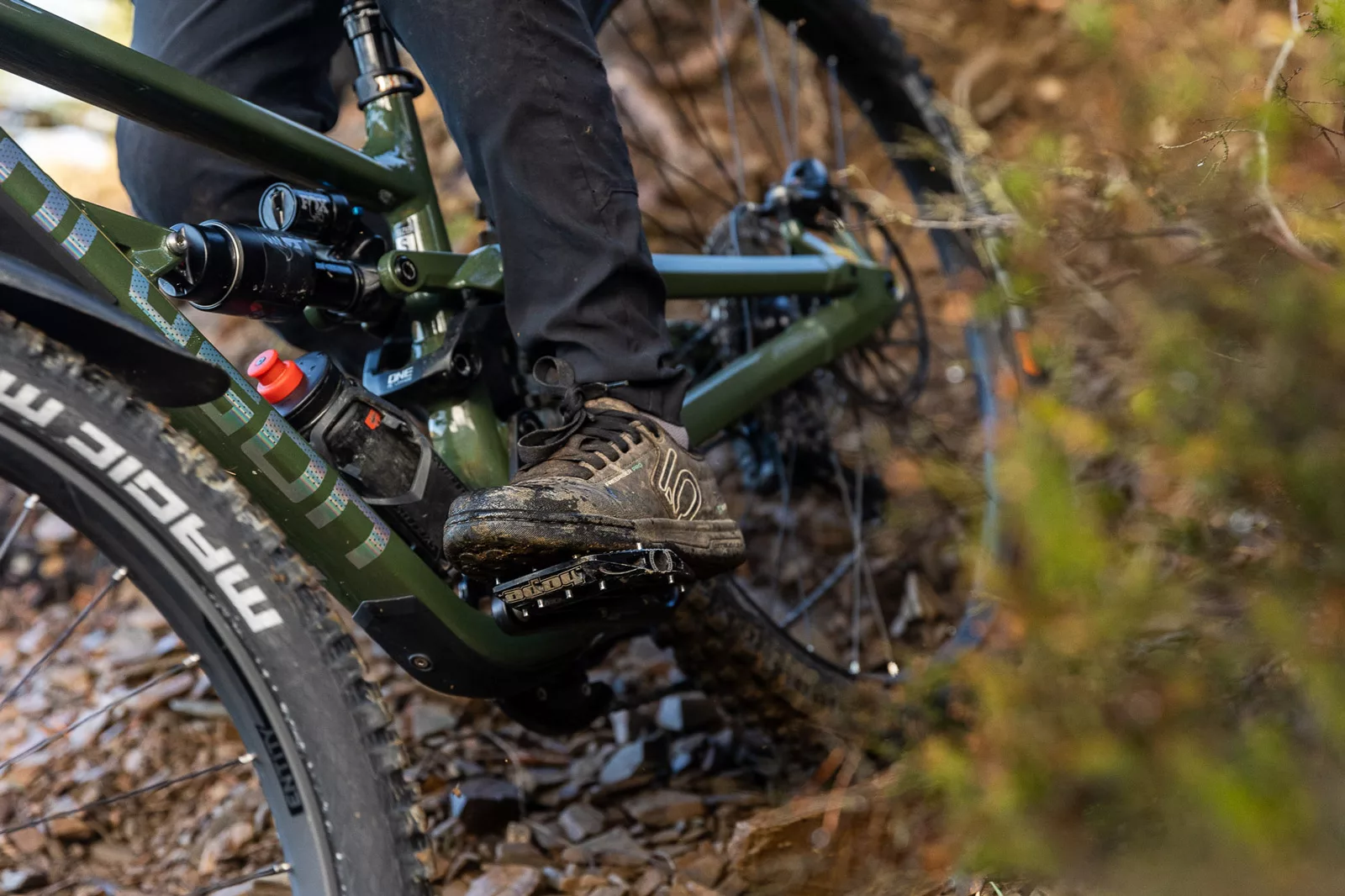
EDITOR’S CHOICE: Five Ten Freerider Pro
Yep, nothing new and earth shattering here. The Five Ten Freerider Pro Shoes continue to sit atop the pile for out-and-out grip on flat pedals. They aren’t the lightest, nor do they dry off very quickly, but their Stealth Rubber continues to reign supreme while the sole offers just enough flex to give sufficient feedback on the trail. Specialized’s 3rd Gen SlipNot rubber came close, as did Endura’s StickyFoot, but neither take the top step.
Something that is new? The Freerider Pro Canvas Breast Cancer Awareness Edition, designed by freerider Veronique Sandler. £15, €15, or $15 USD from the sale of each of these shoes goes to the addidas’ Breast Cancer Awareness Collection to be donated to Breast Cancer Now (UK and EU) or the National Breast Cancer Foundation (North America). So, you can donate to charity and have a fabulous time with your feet on the pedals! And they look stupendous. Well done, Vero!
MTB Helmet
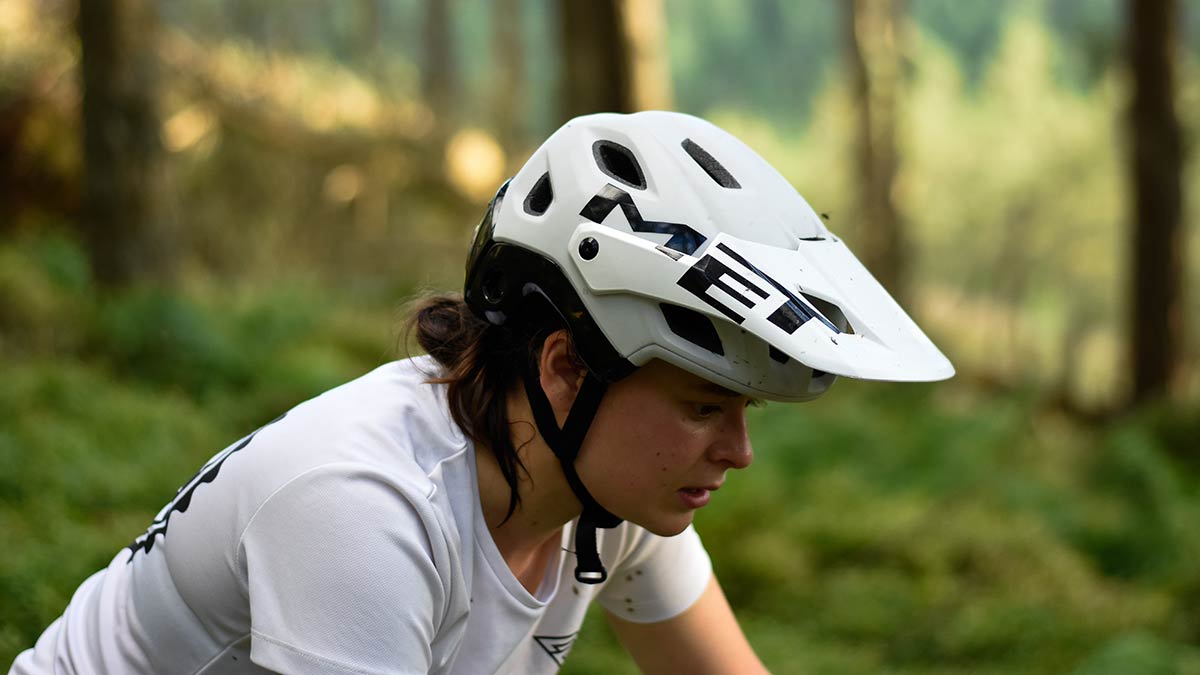
EDITOR’S CHOICE: MET Parachute MCR
Old, but gold. Alright, the MET Parachute MCR isn’t that old, but it has been around in its current iteration for 3.5 years. I reviewed this one at the back of 2019, and have since tested a multitude of both open and full face helmets from Fox, Lazer, Abus, Specialized, Scott, Bluegrass and Leatt, yet none have replaced the Parachute MCR as my go-to head protection; mostly when I just need to the open face configuration. Thus, it is definitively my Editor’s Choice.
The fantastic fit of the helmet is largely responsible for that. I am yet to find another brand of helmets that fit as comfortably and consistently as those from MET. That’s not a reason for you the reader to go out and buy one right away; of course, fit is very personal, and you should always try before you buy when it comes to helmets. That said, it has a number of features that make it worthy of consideration.
The chin bar detachment means you can wear it as an open- or full face helmet, and its ASTM-certification renders it approved for use in DH racing, or indeed enduro racing, now that more and more enduro event organizers are following the rules enforced at EWS Races. There are a number of convertible helmets out there of course; I like this one as I found it easy to train myself to remove or install the chin bar without taking the helmet off. It’s time saving, and the positive engagement of the magnetic mechanism makes it almost impossible to install it incorrectly without realizing. You can read more about the MET Parachute MCR here.
Hip Pack
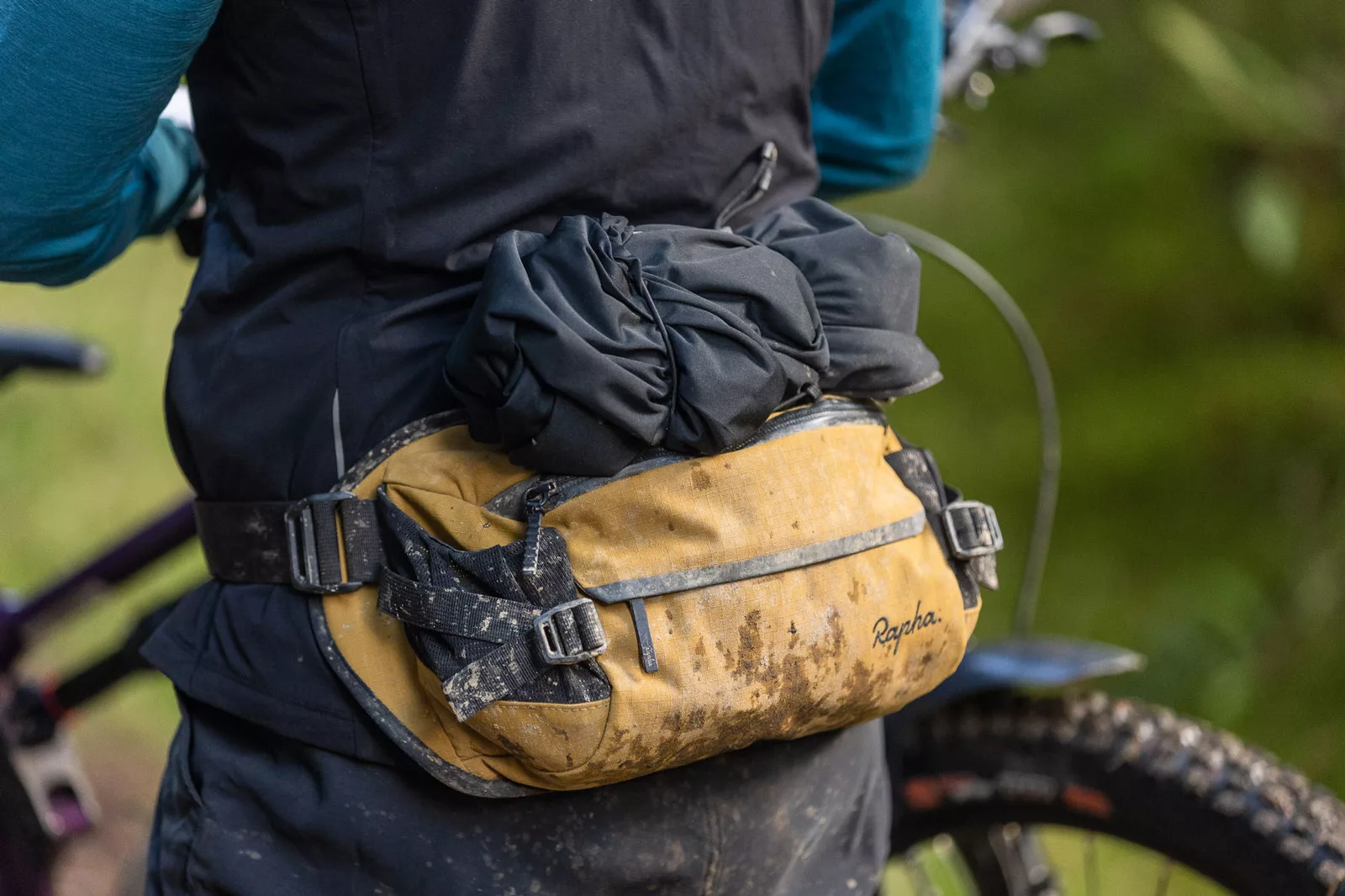
EDITOR’S CHOICE: Rapha MTB Trail Hip Pack
I’m a big fan of riding packless; I love the freedom of movement it permits, and just the basic feeling of freedom you get from not having anything hanging off your torso as you descend. That said, it’s not always possible to go without a pack if you want to be truly self sufficient on the hill, particularly in late autumn or early spring when the weather is a little unpredictable and you really should be packing a waterproof or extra layer just in case. I do want to be self-sufficient on the hill, so i’ve forced myself to wear a hip pack and just get on with it.
Until recently, the EVOC Hip Pack Race 3L was my go-to, but after years of use and abuse, it was time for a replacement. Enter the Rapha MTB Trail Hip Pack that I have found to be flawless. It too has a 3L capacity, with two separate zipper-accessed compartments, the front one of which is home to a key clip.

The body-hugging form of the Hip Pack is a major highlight for me; it sits super comfortably on my hips and can be tightened down at the sides sufficiently without ever feeling like it’s too tight or creating undesirable pressure or pinch-points anywhere. As compared to the EVOC Pack, I find it is less liable to loosening off on long, rough descents thus doesn’t need to be re-tightened quite as much. The less I have to fuss with my Hip Pack the better, so the Rapha Pack certainly takes the win on that point.
Atop the main compartment sits a draw-cord that can be used to stow a jacket. Inside the main compartment are several elasticated bands sewn to the inside; here you can secure smaller items like a multi-tool, plugger, tire lever, etc., so that they aren’t left to rattle around freely when the pack isn’t quite full.
Knee Pads
EDITOR’S CHOICE: Rapha Trail Knee Pads
Best. Knee Pads. Ever.
Need I say anymore? A whole bunch of my riding pals agree. The fit is perfect, and importantly true to the size guide published on Rapha’s website. Thanks to the Rapha Trail Knee Pads, I’ve had a chaffage-free riding season. That’s despite some hellishly sweaty rides throughout summer, too.
Rheon Active Polymer is the protection element that sits inside a lightweight, frictionless, 4-way stretch sleeve. It’s one of those harden-upon impact materials, much like D30, that’s super flexible but stiffens up when impacted to help dissipate energy. I’ve taken a few slams and can confirm it is effective, while the large surface area of the silicon grippers at the upper and lower cuffs prevent any undesirable slippage upon impact.
I really like the design of the grippers themselves. The silicon is arranged in long, thin lines, with gaps to allow sweat to escape through the sleeve’s super breathable fabric. I have a feeling this design goes a long way to preventing any itching that can sometimes be a result of a minor allergic reaction to the sweat that would otherwise accumulate in this area.
Torso Protection
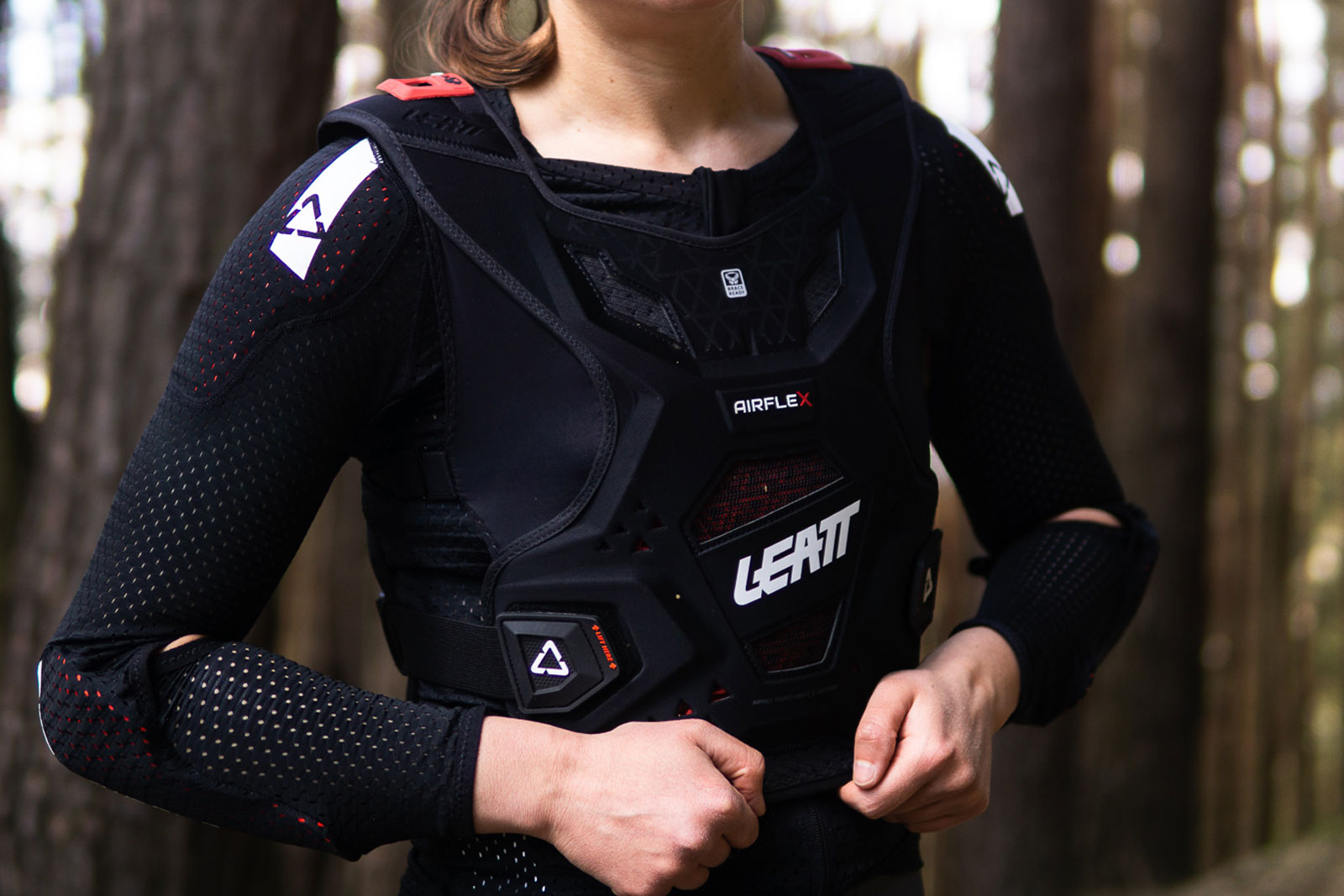
EDITOR’S CHOICE: Leatt AirFlex Women’s Chest & Back Protector
Another item of protection that has served me well this year is the Leatt AirFlex Women’s Chest and Back Protector. This vest-shaped protection slips on over your head and is doubly secured in place by an elasticated velcro strap and hook on each side. At the inaugural Project Evolve event at Revolution Bike Park, I took a slam on the first run of the day (classic), tucking the front wheel in a tighter than expected left-hander. I was thrown over the bars and deposited chest first onto the hard pack. I wasn’t winded by the impact, and my ribs remained unharmed. Happily, we’ll never know the consequences had I not been wearing the protection.
The vest accommodates my 32C chest, with no uncomfortable squash scenario to speak of. I just kind of feel locked in, with the chest protection element sort of acting like an extra supportive sports bra. Other than that, I kind of forgot I was wearing it. Ideal. Full review of the Chest, Back and Body Protection here.
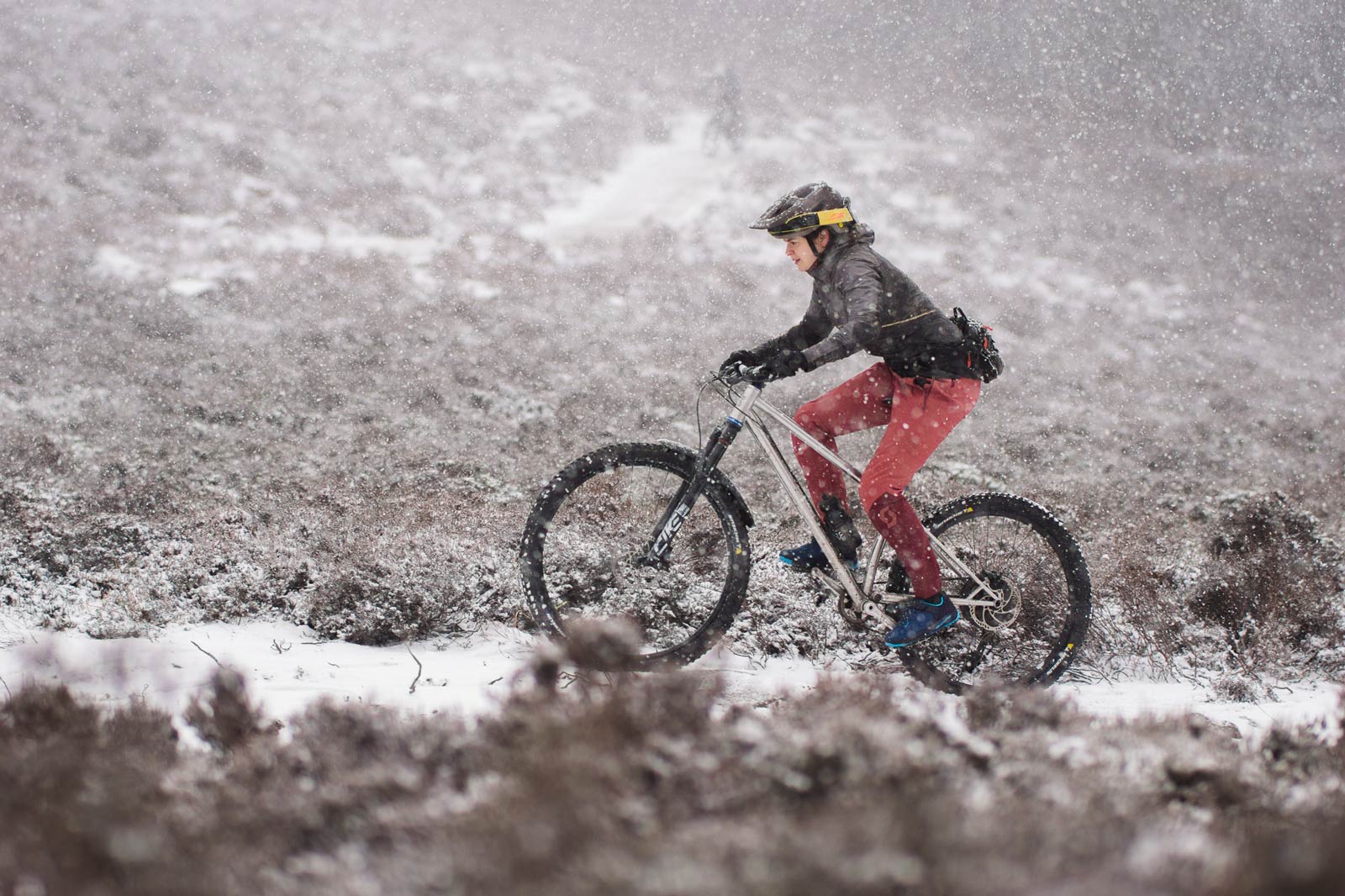
EDITOR’S CHOICE: Scott Trail Storm Pants
What a fantastic piece of kit the Scott Trail Storm Pants are. These actually waterproof riding pants are windproof too, and reasonably breathable, thus are the perfect remedy to the ghastly winter weather that has fallen upon us here in the Tweed Valley. Pair them with the Five Ten Trail Cross Gore-Tex Shoes and you’ve got yourself a winning combo that will leave you with little to no excuses not to go riding despite the dreich deluge.
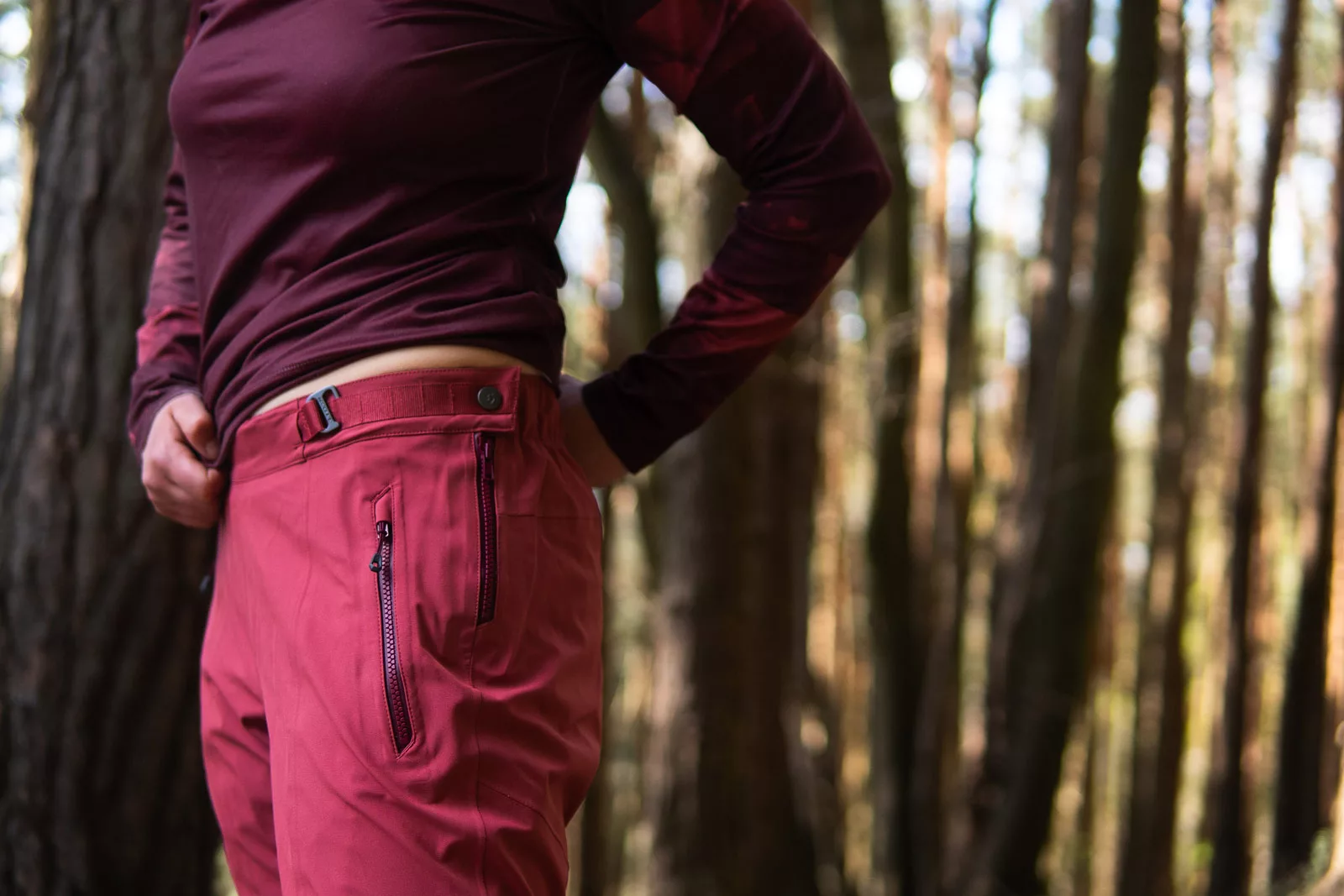
The waist band of these waterproof pants is well thought-through. A main zipper positioned at the left side provides closure, while a button fixes the two sides together. The rear portion of the waist band is rucked where an elasticated insert cinches it tight, one end of which can be hooked into one of six positions so you can dial in the fit. I found it to be plenty comfortable, even when wearing a hip pack.
EDITOR’S CHOICE: Giro Women’s Cascade Insulated Vest
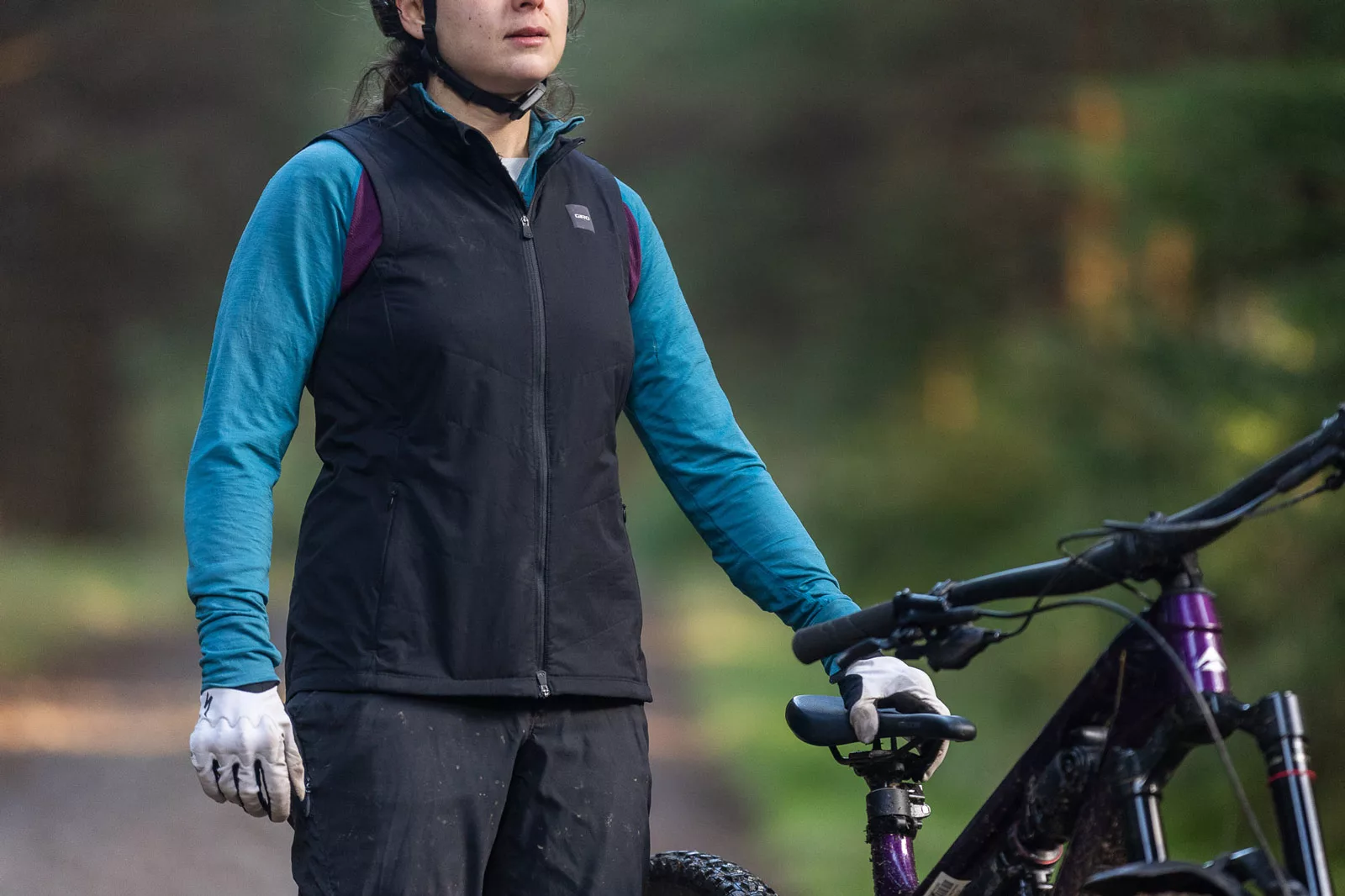
The Giro Cascade Insulated Vest is one of the best additions I made to my mountain biking wardrobe all year. It is essentially a fleece-lined gilet that can be worn as an extra layer over a jersey on cold but dry winter days, or as a more breathable mid-layer underneath a waterproof jacket when its rainy. Giro recommend it for use in conditions as cold as 40° to 55° F (4°C to 13°C), though i’ve been adding it as a supplementary layer in conditions south of freezing.

In particular, i’ve found it a useful layer for dry, cold days where i’m out to put in some big efforts on the climbs; say for interval training or the like. The lack of insulation on the back panel, and of course the lack of sleeves, means you can sweat heaps without having too much of that excess water hanging around close to your skin when you’re cooling down, while the Polartec fleece keeps your torso toasty.
At £179.99, the Giro Cascade Insulated Vest is a fair bit more expensive than some comparable options from other brands, but as part of Giro’s Renew Series, a minimum of 50% of this garment is made from recycled materials.
EDITOR’S CHOICE: Giro 100 Proof Winter Gloves
The Giro 100 Proof Gloves are not your average Winter Riding Gloves. These do a proper job of keeping your digits warm with a Polartec Power Dry Insulated Core and Deep Pile Fleece Liner. Now, they are nowhere near breathable enough to wear while climbing, especially if you’re giving it some beans. Your fingers will soon be soaking if you put in a decent uphill effort, and subsequently very, very cold if you stop and allow the frozen winter air to cool you down.
But. And it’s a very important but. They allow for one-finger braking! Excellent news for riders who want to bag some singletrack descents, even when it is -6°C and 4″ of snow lying. These have been a game changer for me in the last few days alone. I don’t wear them while climbing for the aforementioned reasons, but I put them on before dropping into a descent. I’m not whipping them on and off every couple of minutes; the riding around the Tweed Valley usually entails a long (40 minute) fire road climb followed by a good 5-7 minutes worth of pedal-free descending per run. So, having a different set of gloves for climbing and descending makes good sense, especially when it means you can still feel all your digits by the end! These will be a staple in my riding pack this winter.
Off The Bike
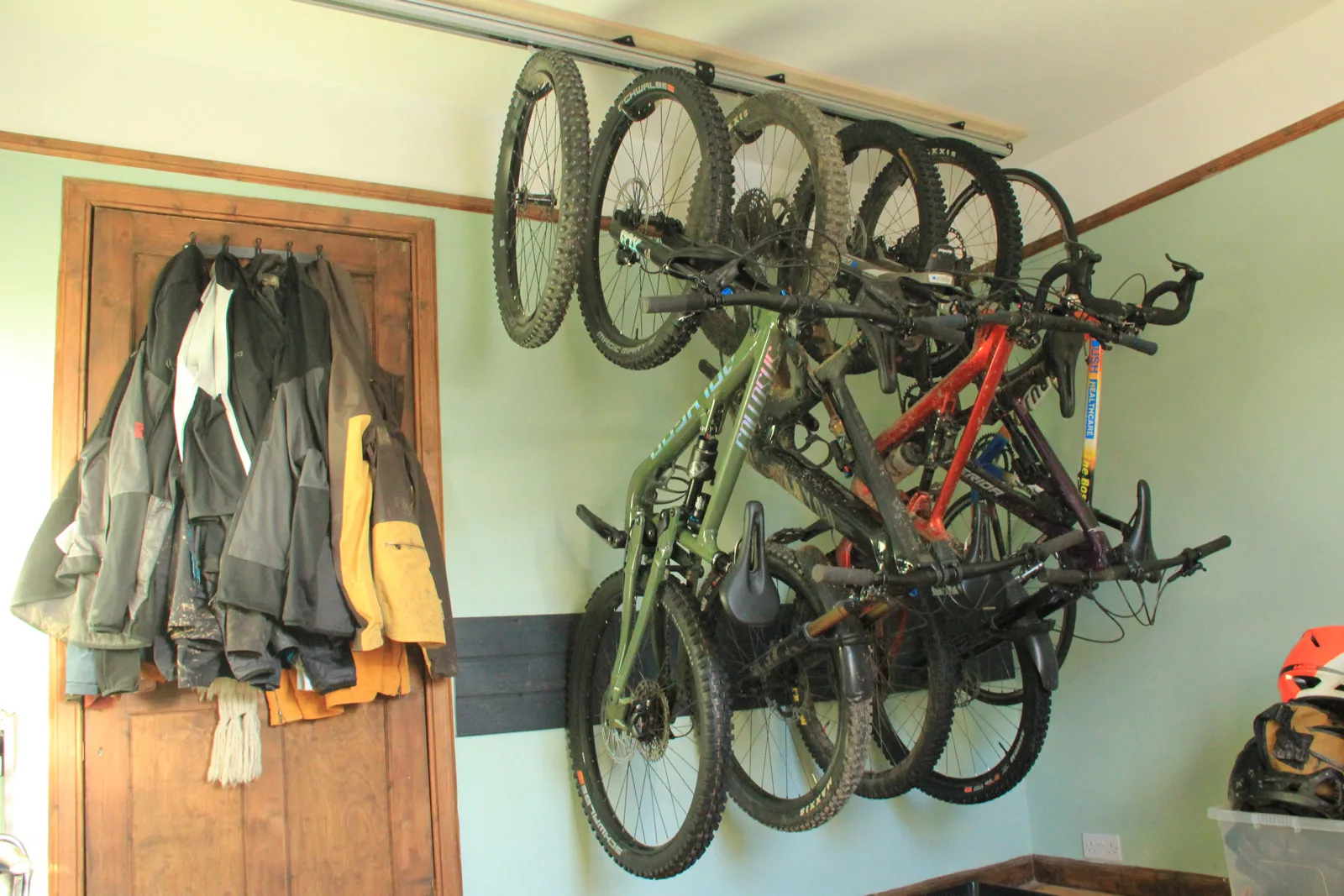
EDITOR’S CHOICE: Stashed Space Rail
I live with my partner in a two bedroom flat, the latter of which serves as an office and workshop. We both work from home, so space is at a premium in this household. Prior to this setup, I had just two bicycle hooks mounted to the wall, and the rest of my test bikes would just sort of lean against one another up against another wall. It was sub optimal to say the least; getting the bikes in and out on any given day required a fair amount of juggling, along with use of a few choice swear words.
Needless to say the Stashed Space Rail has revolutionized the space, and the daily in and out of bikes is a much more seamless, stress-free affair. I have two rails with 6 hooks; the two are joined together, so all the hooks can slide back and forth between the two rails. And they can rotate. On this set up, I can add another two hooks to store a maximum of 8 bikes at any one time.
The Space Rail has been flawless. You could store the same number of bikes in the same amount of space with regular bike hooks of course, but they would never be as easily accessible as they are here. You’ll notice the Rail extends past the door; that seemingly “dead space” serves as the reservoir, if you like. To access any bike that’s not on the end, I just slide the bikes I don’t want along to the left, pick out the one I want and then slide them back into position, out of the way of the door. No drama. Until the dog comes barging in unannounced.
EDITOR’S CHOICE: AirShot
I can’t allow 2022 to go by without giving a shout out to the Airshot, a handy piece of kit that has simplified numerous tubeless setups for me over the last few years. It’s super useful to have kicking around, especially if you don’t live near to a bike shop that’s home to a compressor, or if you want to be able to make quick tubeless tire changes on a race weekend.
It is basically a metal canister with a Presta valve on top. Some rubber tubing extends out of the canister, terminating at a thread-on connector for the Presta head on your tubeless valve.
Basically, you thread it onto your tubeless valve stem (with valve core removed), then pressurize the canister to a maximum of 160 PSI (11 Bar) with the isolator valve set to closed. Then when ready, you simply flip the valve’s lever and watch as the canister’s 160 PSI is dumped right into your tire, and wait for the satisfying “ping” noises that indicate the bead has seated into position on the rim. If you’re concerned it isn’t going to be sufficient, you can leave the track pump connected and continue to pump air in even after the majority of the canister’s contents have been expelled into the tire. I’ve used it successfully on some high volume tubeless setups, the highest likely being a 29″ x 2.6″ tire on a 31.5mm internal width rim. It hasn’t failed me yet!
Three Small Things
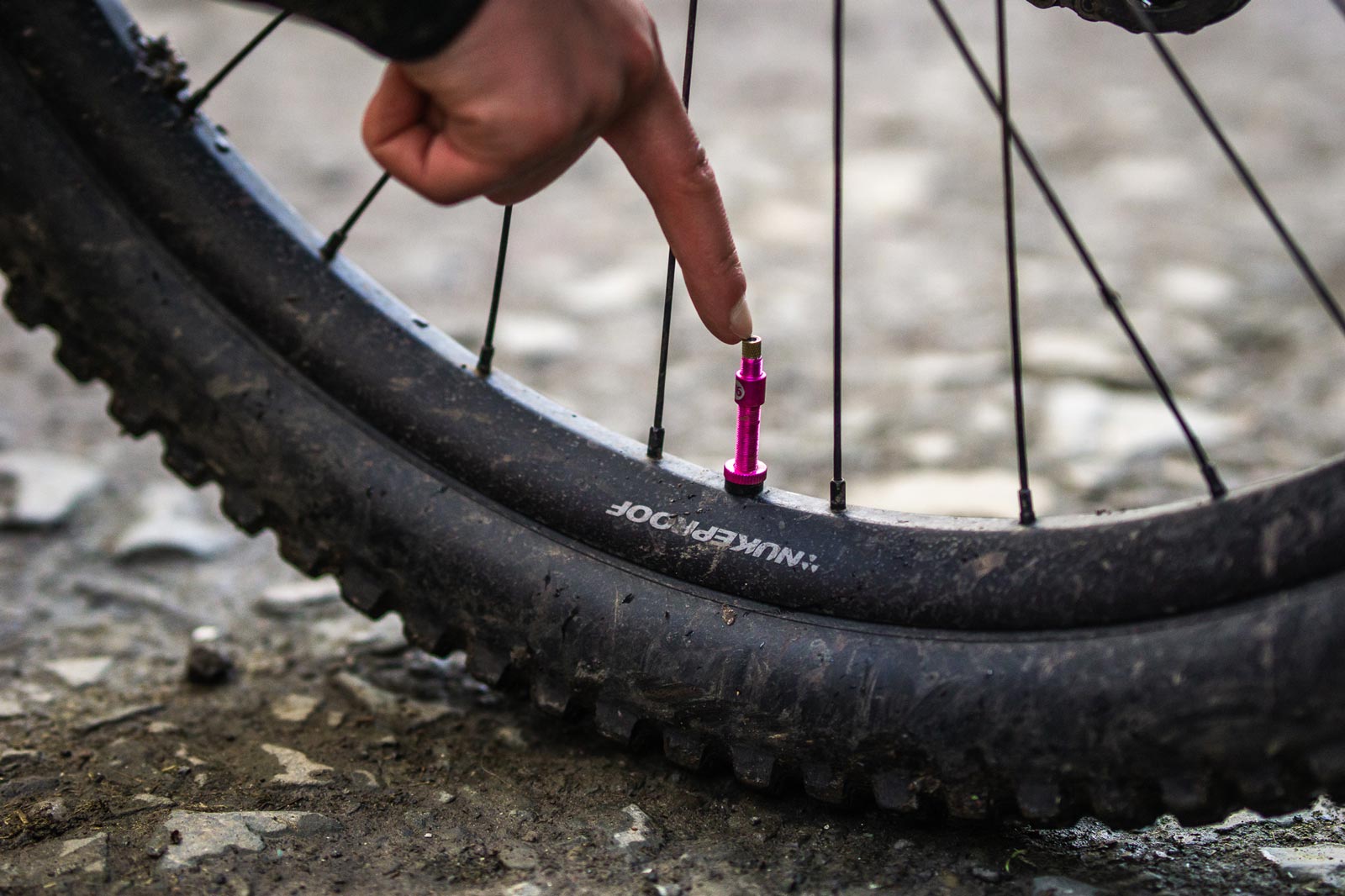
EDITOR’S CHOICE: 76 Projects Hi Flow No Clog Tubeless Valves
Presta valves have a tendency to clog up with sealant, owing to their narrow lumen that is often much smaller than the holes your sealant is designed to seal up! It may not be the biggest problem we face as cyclists, but it sure is frustrating when you’re struggling even to top up the tire with air. Enter the 76 Projects Hi Flow No Clog Tubeless Valve, a complete redesign of the ubiquitous Presta Valve that offers up to 4X the air flow.
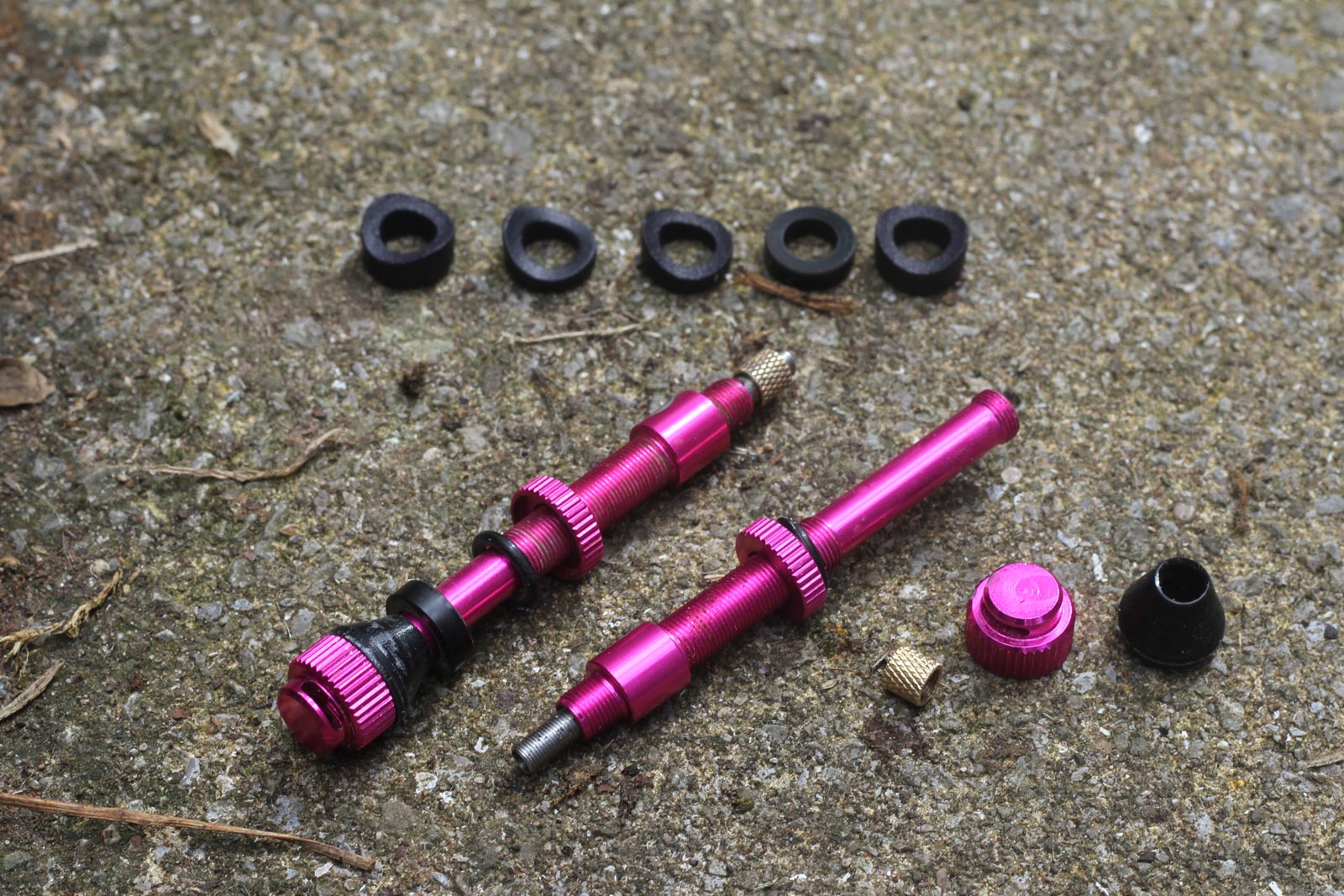
If you so wish, you can read the full review here, but know this: the 76 Projects Hi Flow No Clog Tubeless Valve works as advertised. In the eight months or so i’ve had it in use it has remained blockage free while at least three regular Presta tubeless valves have required maintenance; removal of the valve core and the tedious extraction of coagulated sealant. It’s not a major hardship, but it’s also not a job you want to have to do when you’re already late to meet your pals for a ride.
The 76 Projects Valve is made up of no fewer than eight small parts, and is a little bit fiddly to install initially. That said, it is a fit and forget item thereafter. Oh, and it’s compatible with tire inserts!
EDITOR’S CHOICE: Mudhugger EVO Velcro Mudguard
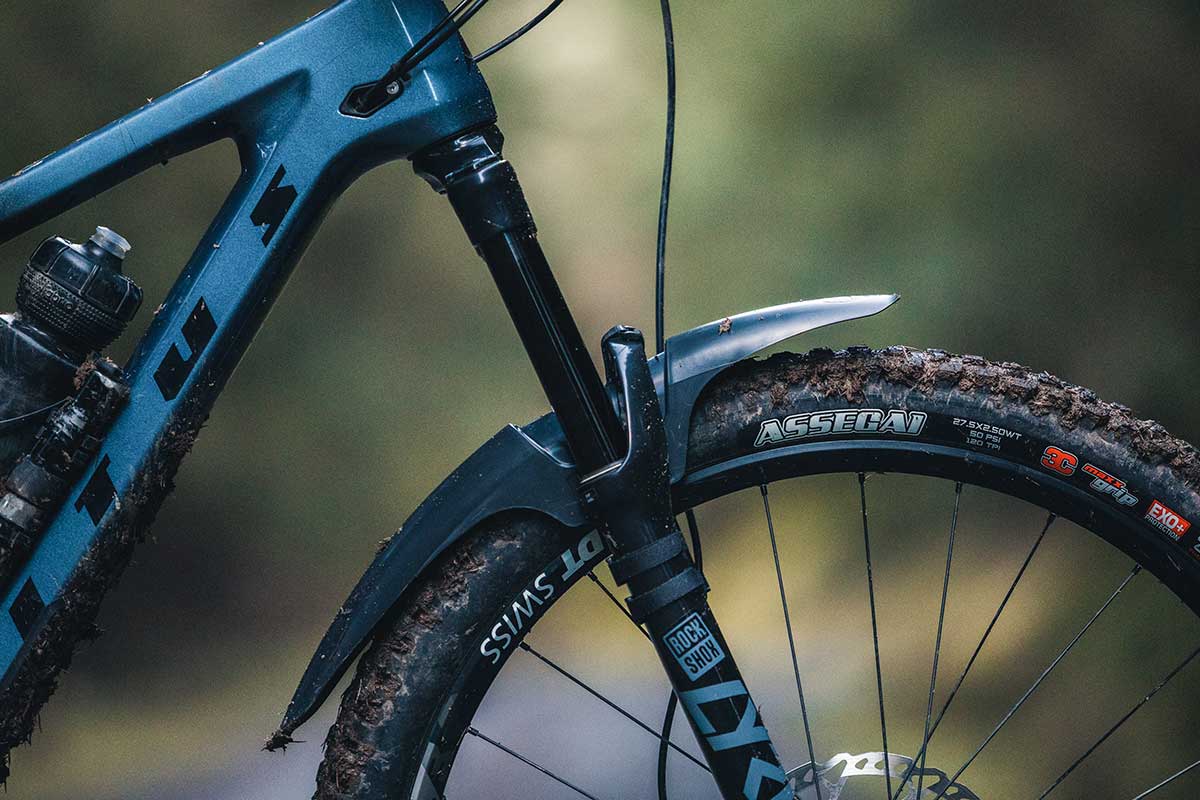
The Mudhugger EVO Mud Guard is so comprehensive that I was able to forgo the use of a lens in my Smith Squad Goggles (it was steaming up) at two of the wettest enduro races this season; the Scottish Enduro Round 2 in Pitfichie, and the Scottish Enduro Round 3 in Innerleithen. Safe to say we were all wetter than an otter’s pocket by the end of each of those races. But, did I get mud in my eyes? No I did not! All hail the Mudhugger.
I have the velcro version as I can easily swap it between test bikes. They do offer fancier bolt-on versions though, designed for the latest Fox 36 and 38, and the Rockshox ZEB.
EDITOR’S CHOICE: A Foil Blanket
I’m going to end on a note that will make me sound like your mum. I’ve recommended it in a previous Editor’s Choice Article, and I will recommend it again; a foil blanket is considered by many folk who are far more adventurous than myself as an essential piece of emergency kit, especially come winter. Though it may seem like nothing, a foil blanket such as this one from Life Systems can trap up to 90% of heat radiating from your body – heat you’re going to want to hold onto if you strike a misfortune on the hillside and need to wait for emergency evacuation.
Do invest. They’re super cheap, super light, and could actually save your life or your friend’s life one day. Also makes for an excellent sled, so I hear.
